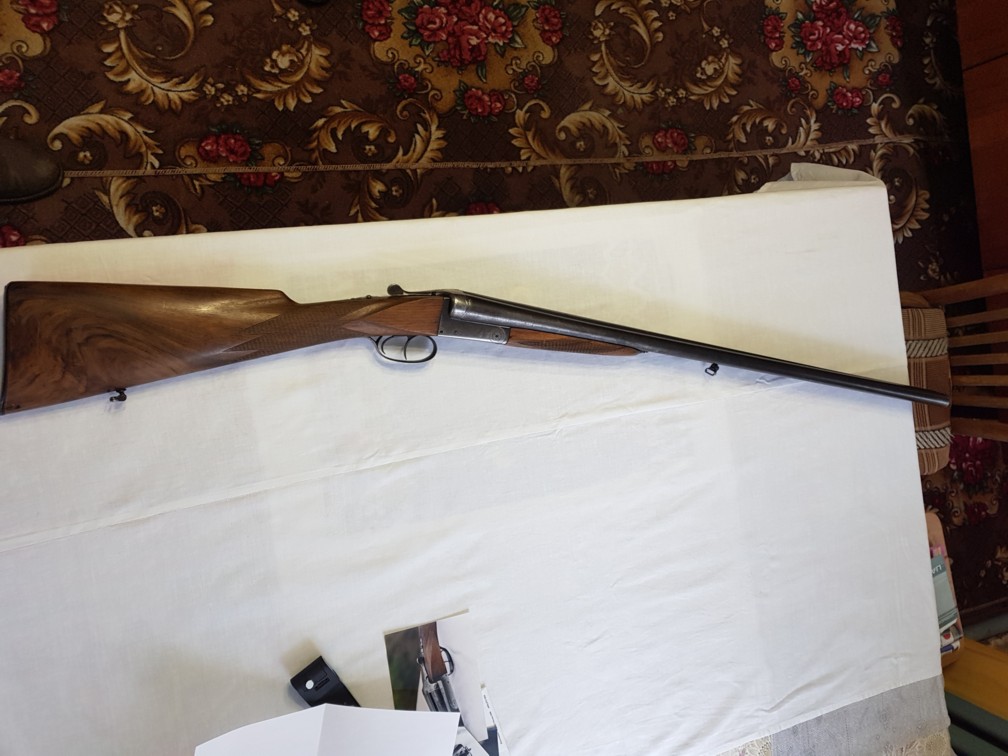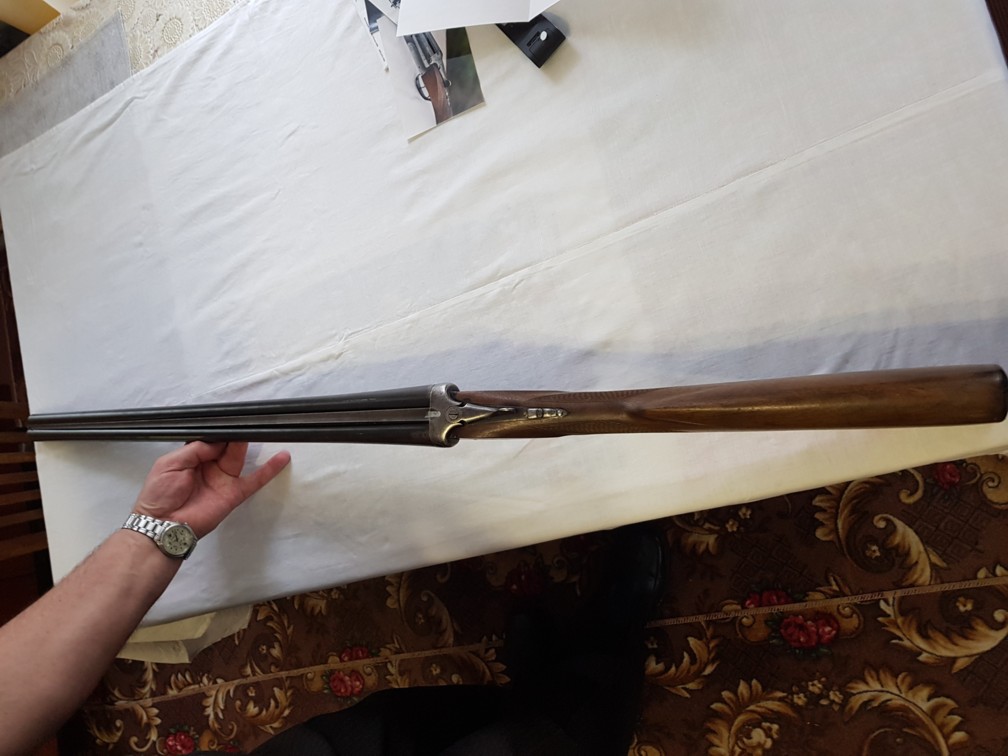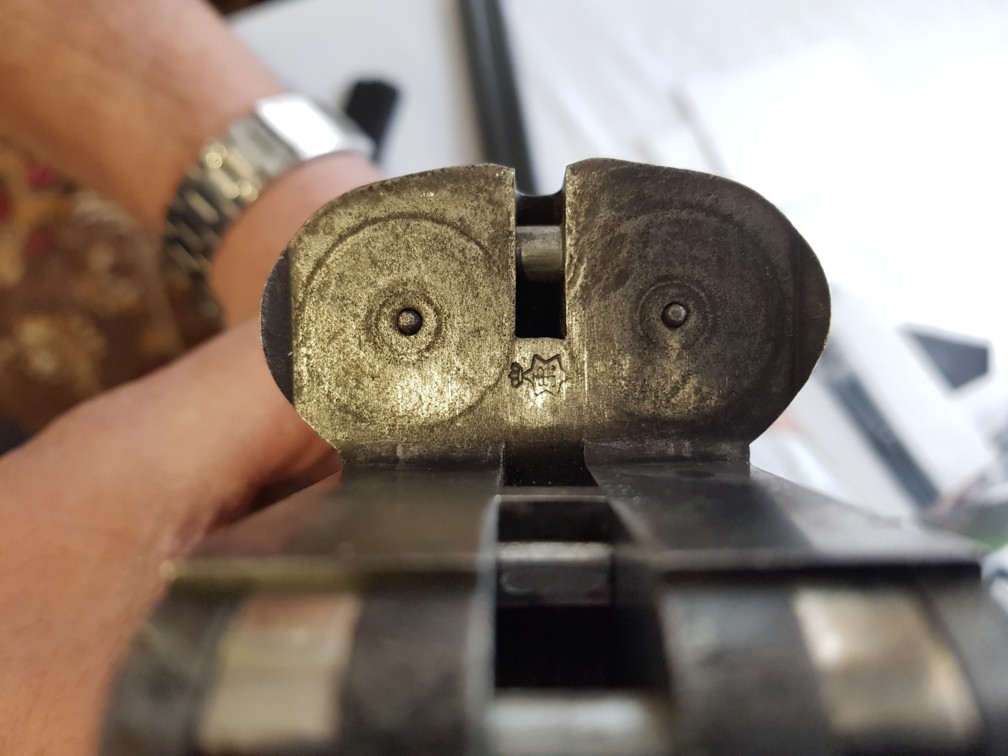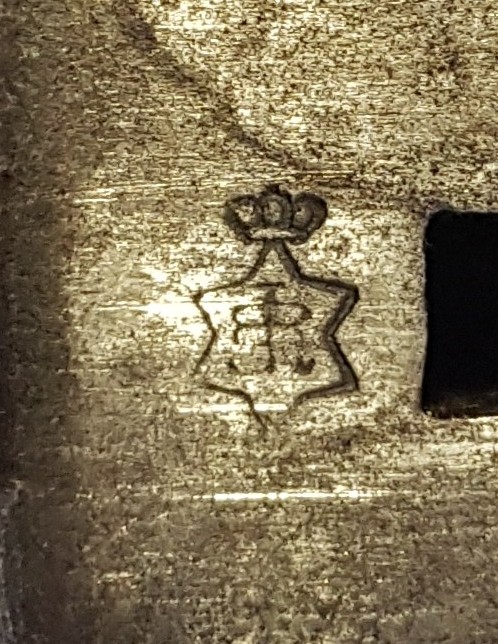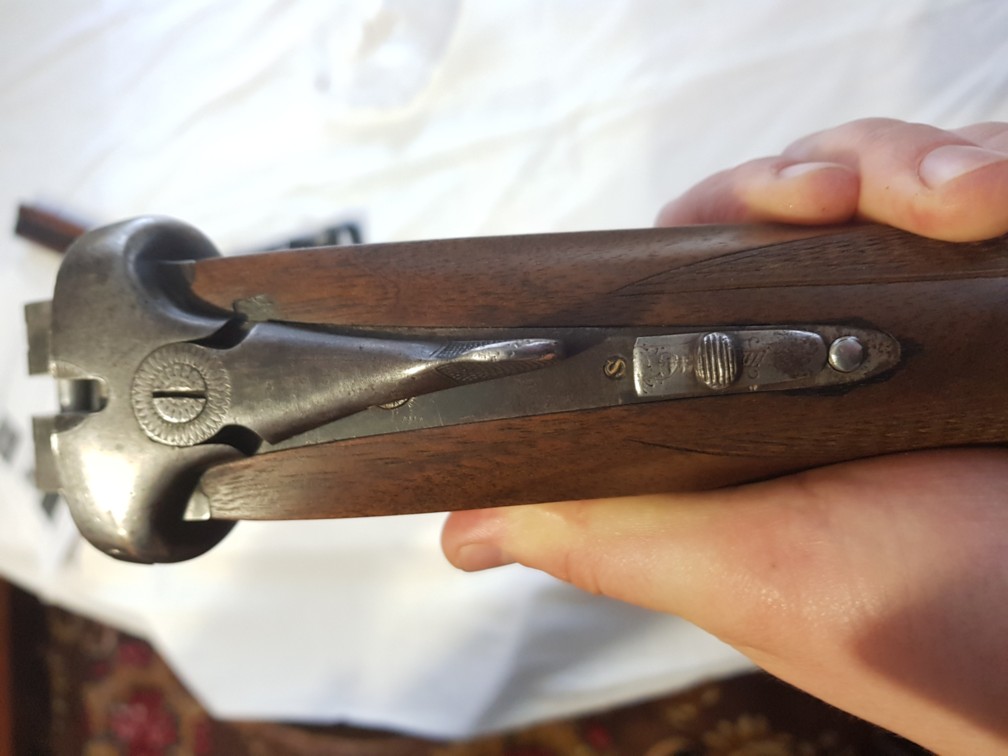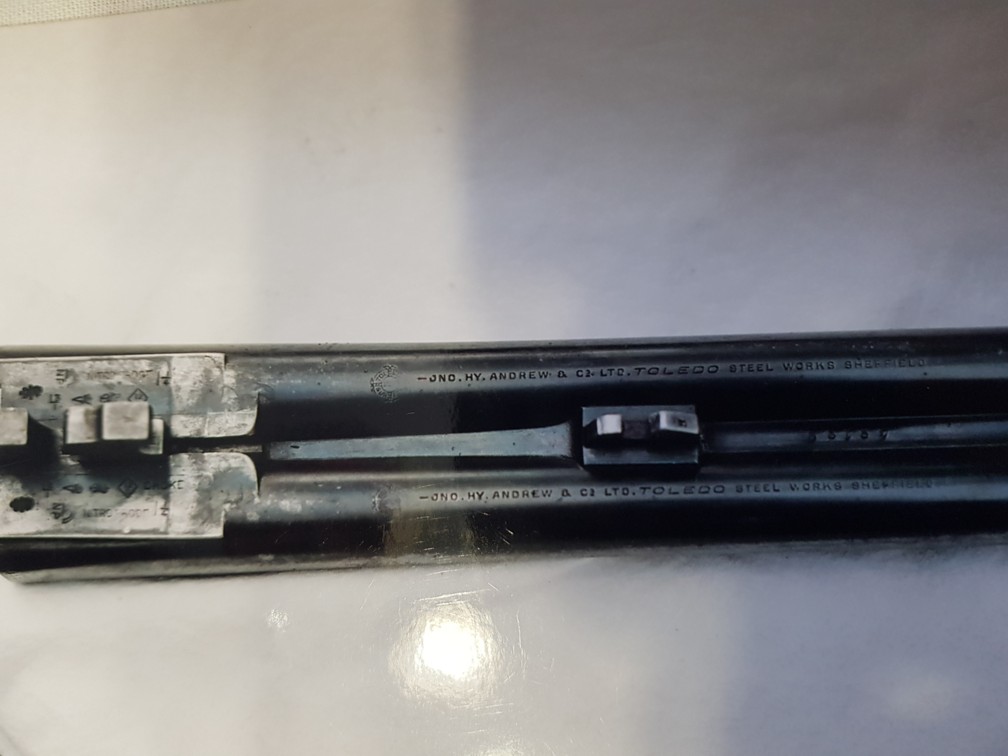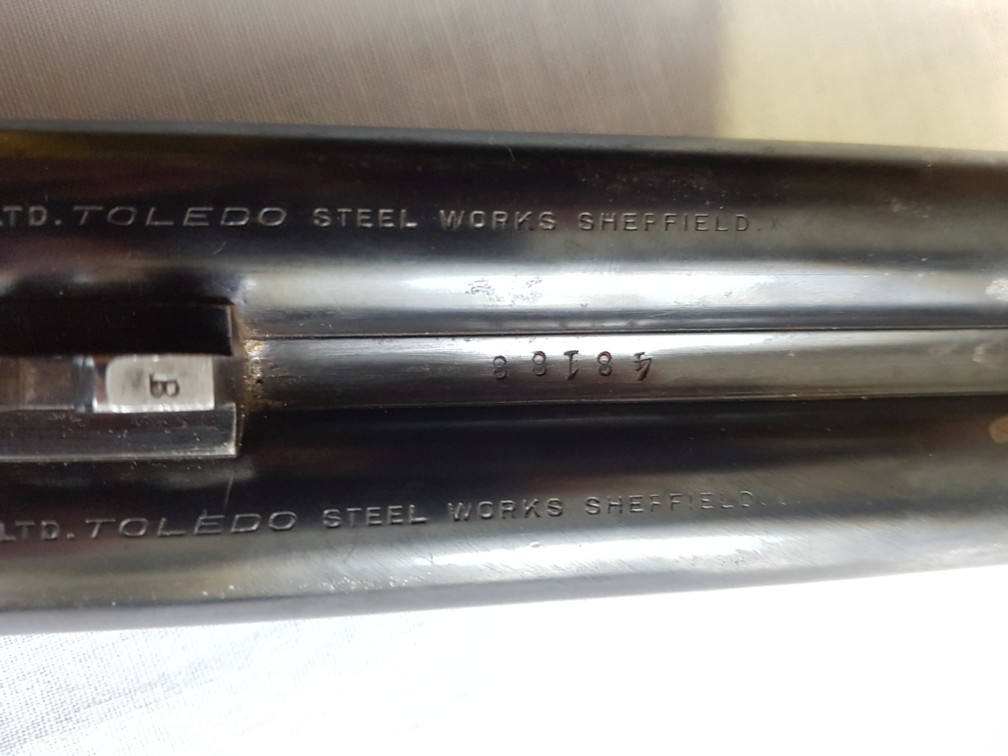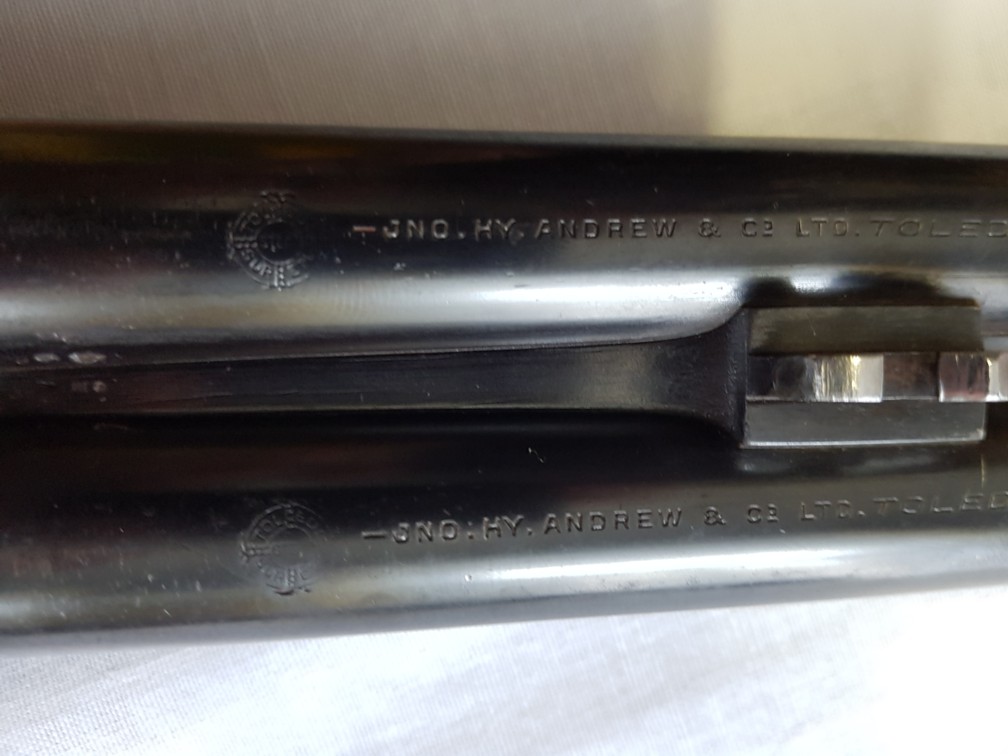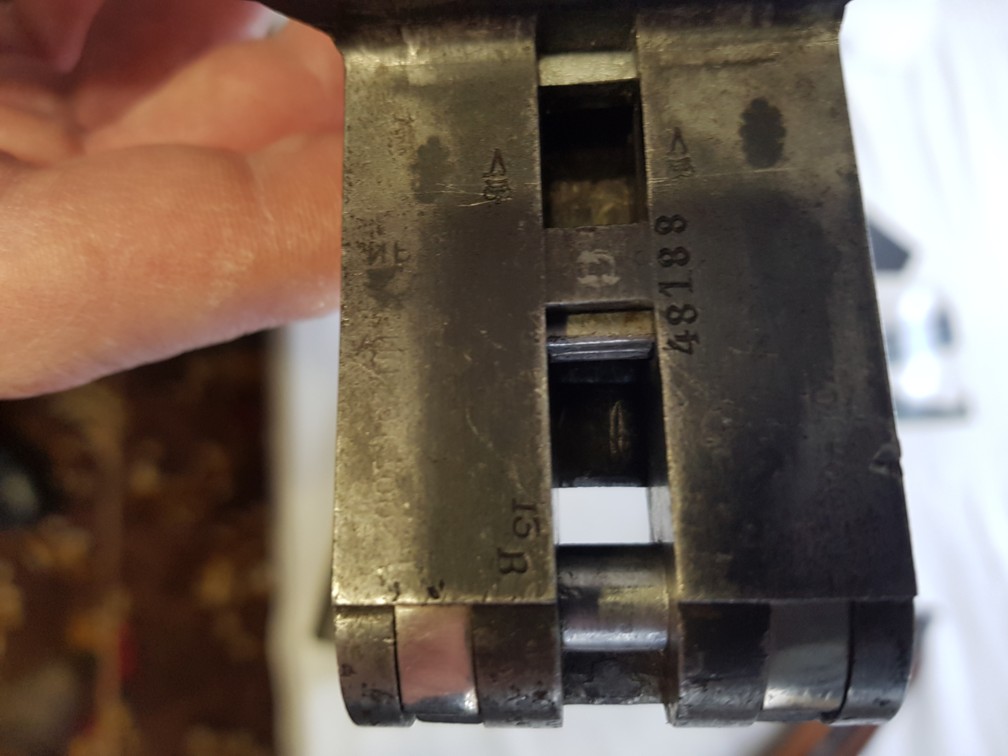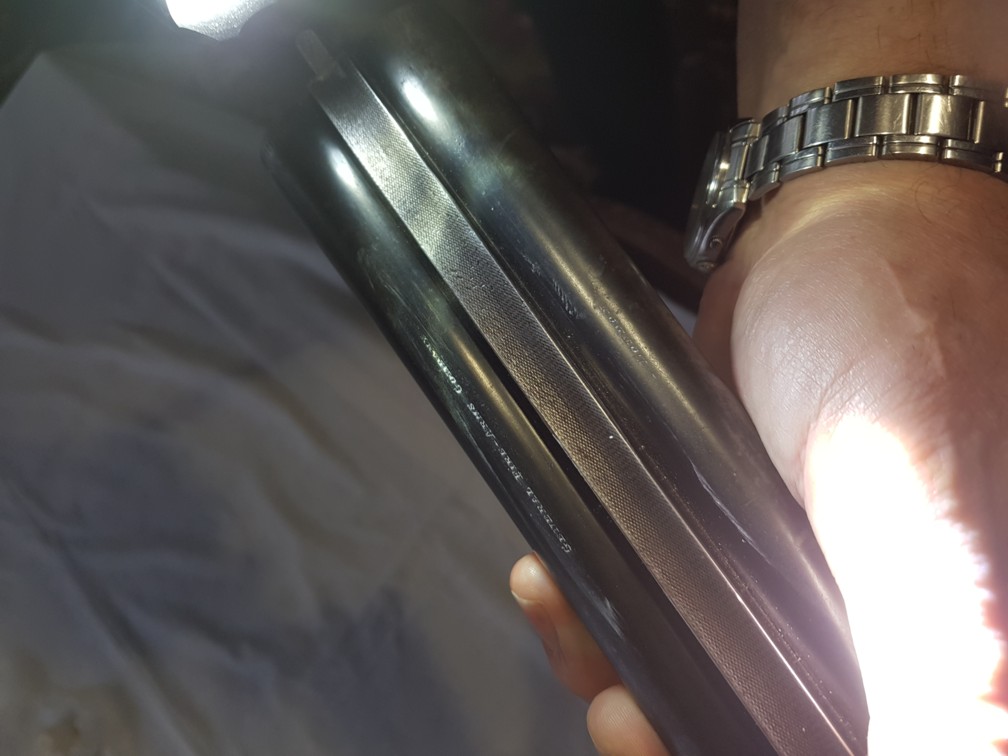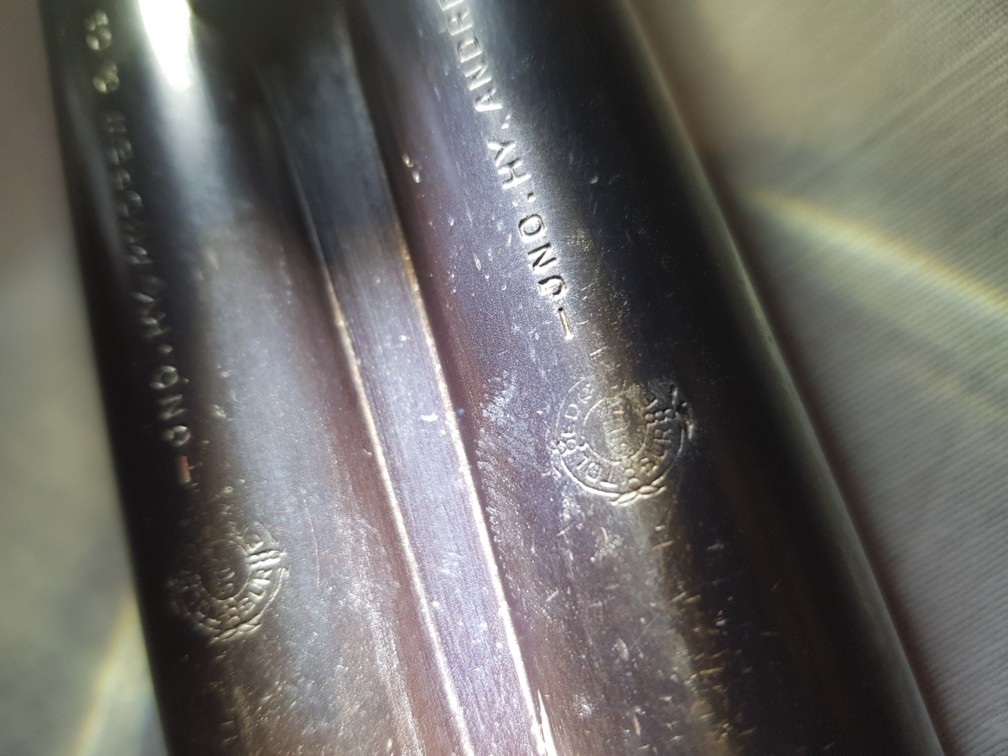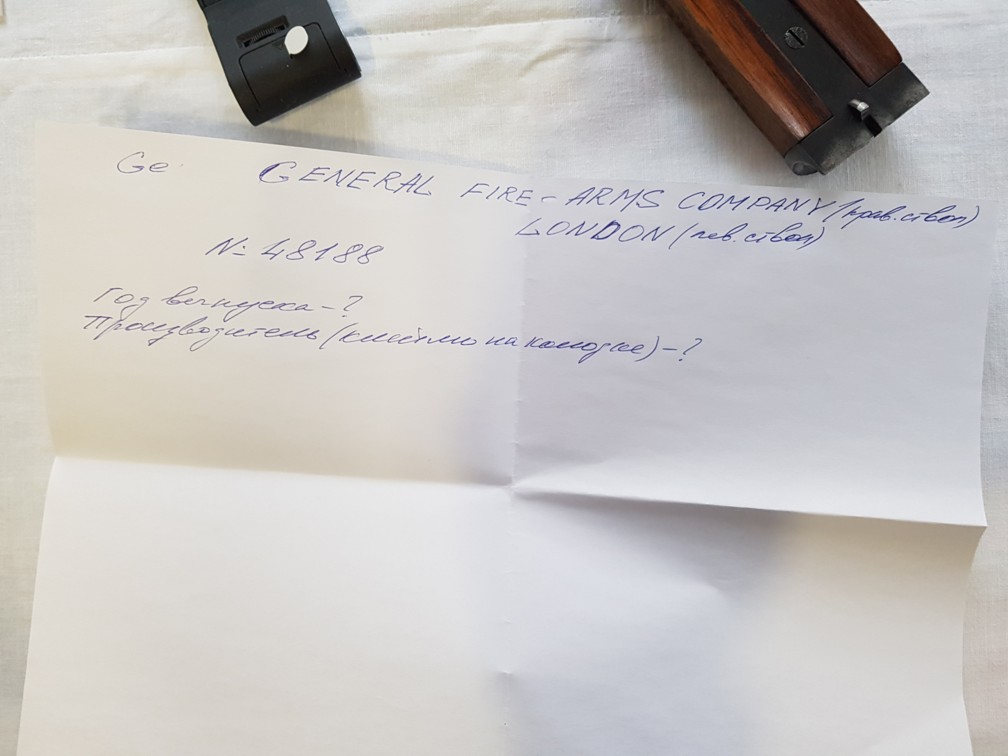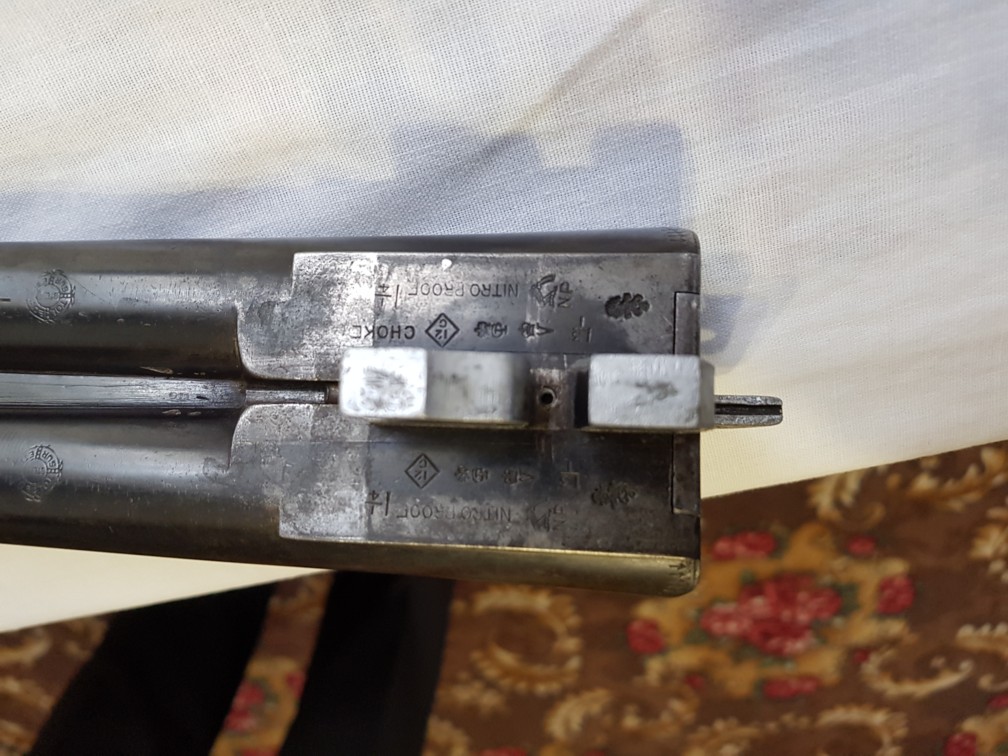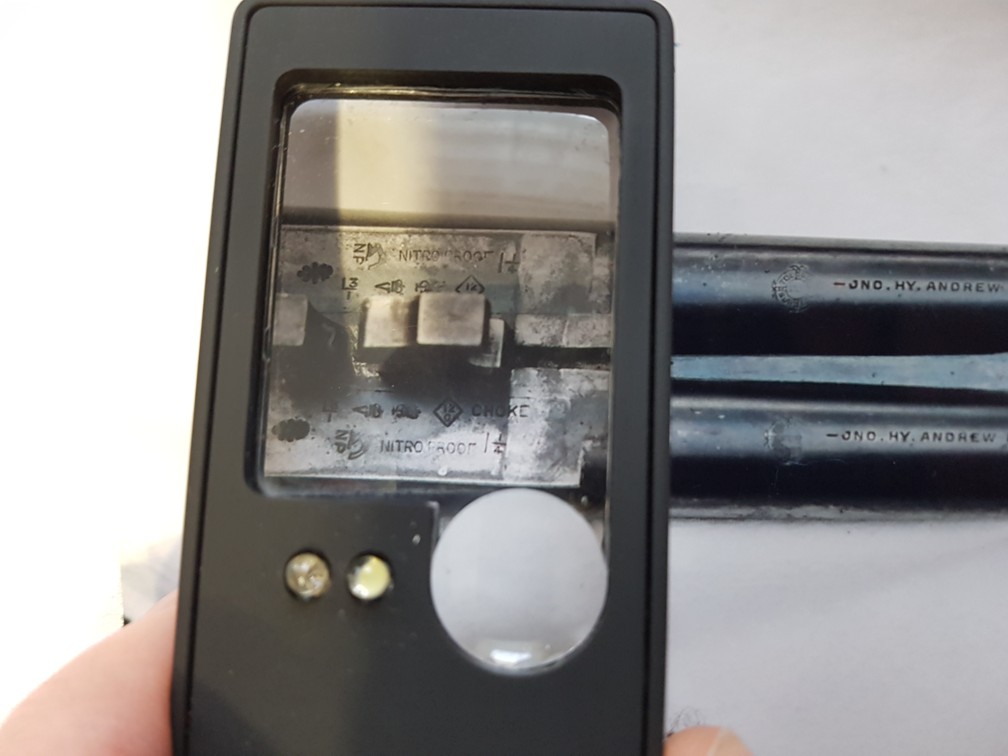Some of the most beautiful work of this craftsman, and many others, are in this book “Liège Gunmakers through their Work. 1800 - 1950”.
For more detail see: LIEGE GUNMAKERS
RONGE Jean-Baptiste
Here is a
classic shotgun juxtaposed with locks, butt semi-pistol, support cheek.
The attribution of this rifle to the one or the other
Liège armourer is difficult, in the sense that if we can see the initials
JBR under
a five-pointed star with a crown in the centre of the star, which belong to "Jean-Baptiste
RONGE", the mention
Excelsior
(Hammerless) on the band between the
barrels was deposited by the "Manufacture Liégeoise
d’Armes à feu"
under number 622 on August 7, 1893.
The same company also filed the trademark
Acier Excelsior
under number 1052 on September 7, 1901.
It is logical to think that the
Excelsior
Hammerless brand is also one of the brands
of the "Manufacture Liégeoise
d’Armes à feu".
Understand who can.
The
markings
EL:
provisional proof, in use since 1852;
Perron:
inspection, in use since 1853;
16. 6 and
15. 8: it should be the diameter in millimetres, but it doesn’t “sticky” so. . .
, the 16 gauge being 17. 4 mm. . .
16 on C
in diamond: calibre, in use between 1898 and 1924;
ELG on
star in crowned oval: accepted, in use since 1893;
J under a
star: countermark of a controller, in use since 1877;
JW:
Unidentified.
GP with the help of HPH
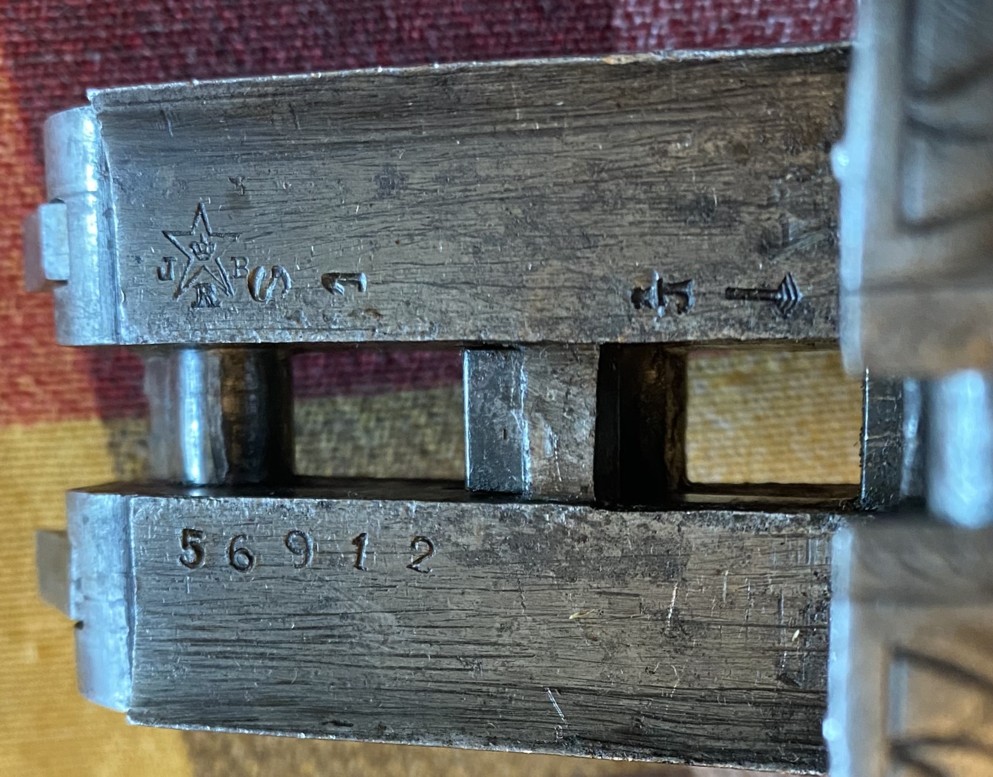
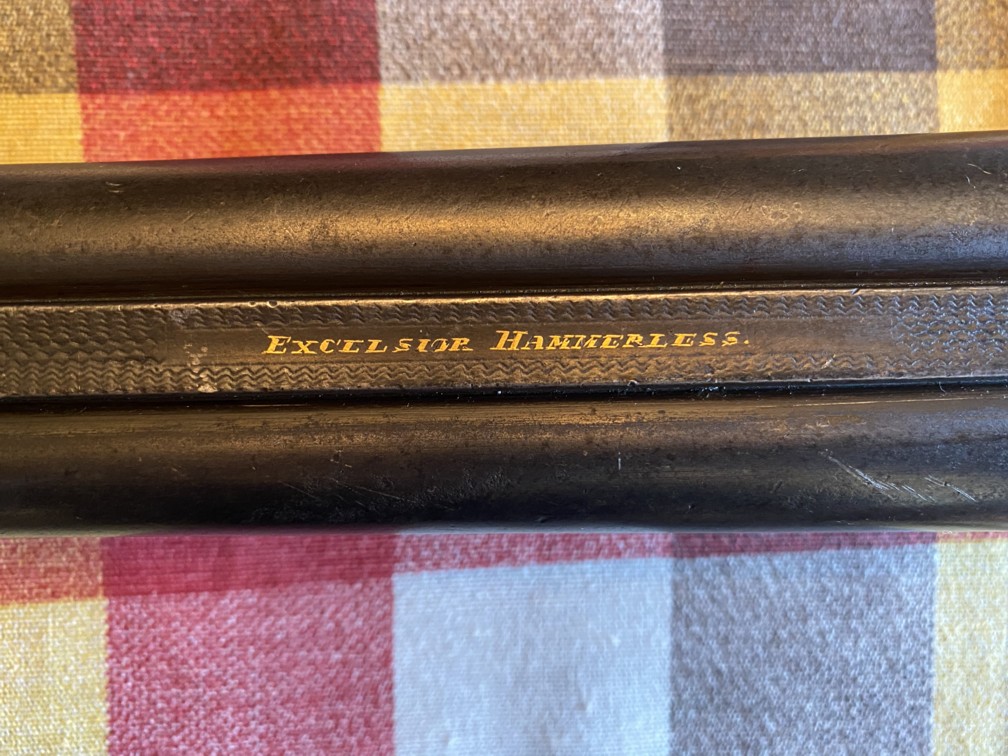
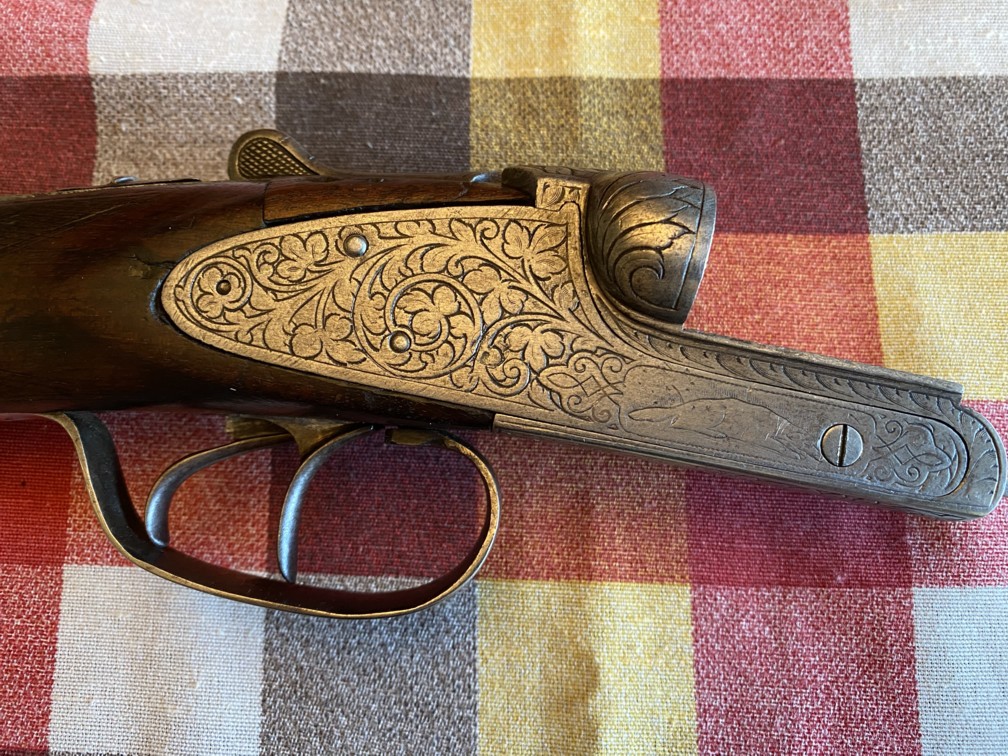

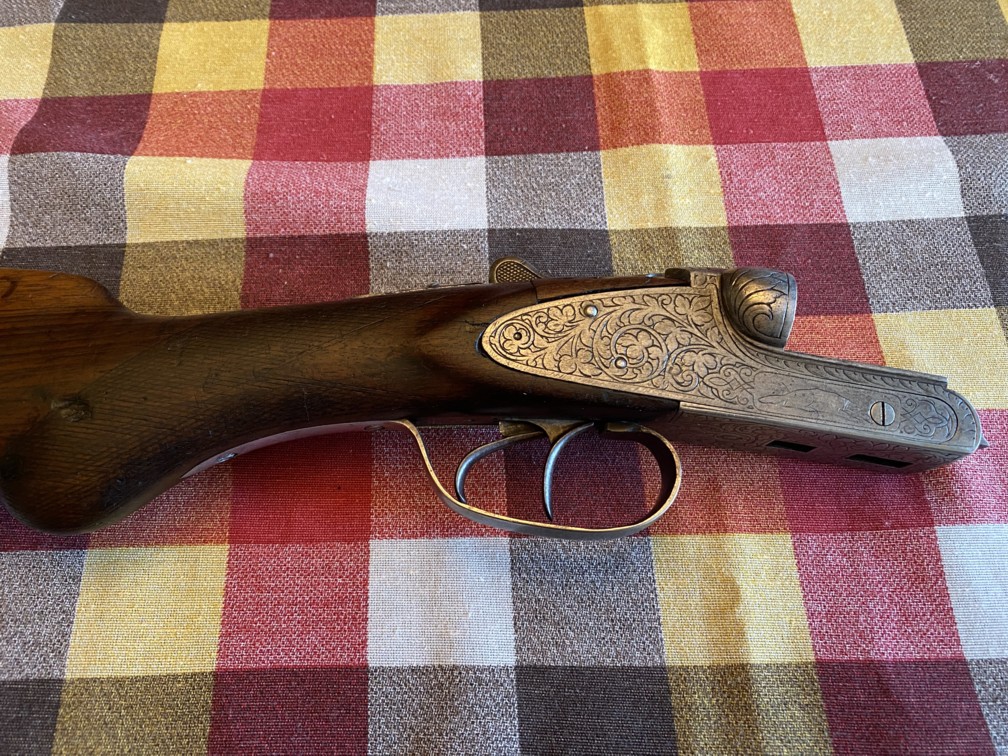
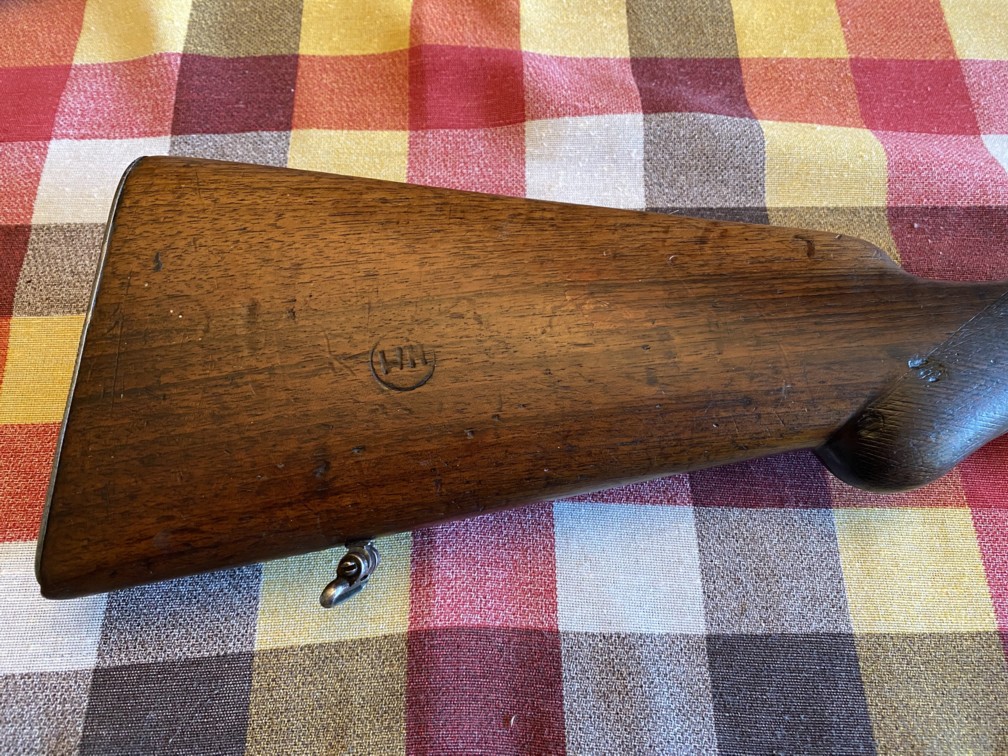
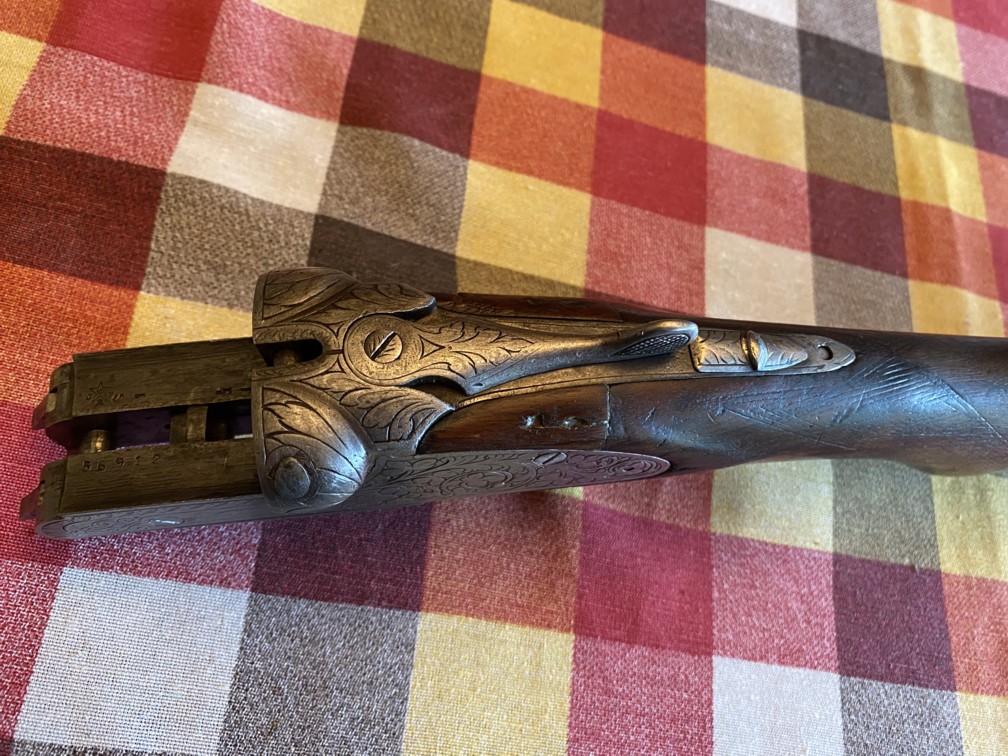
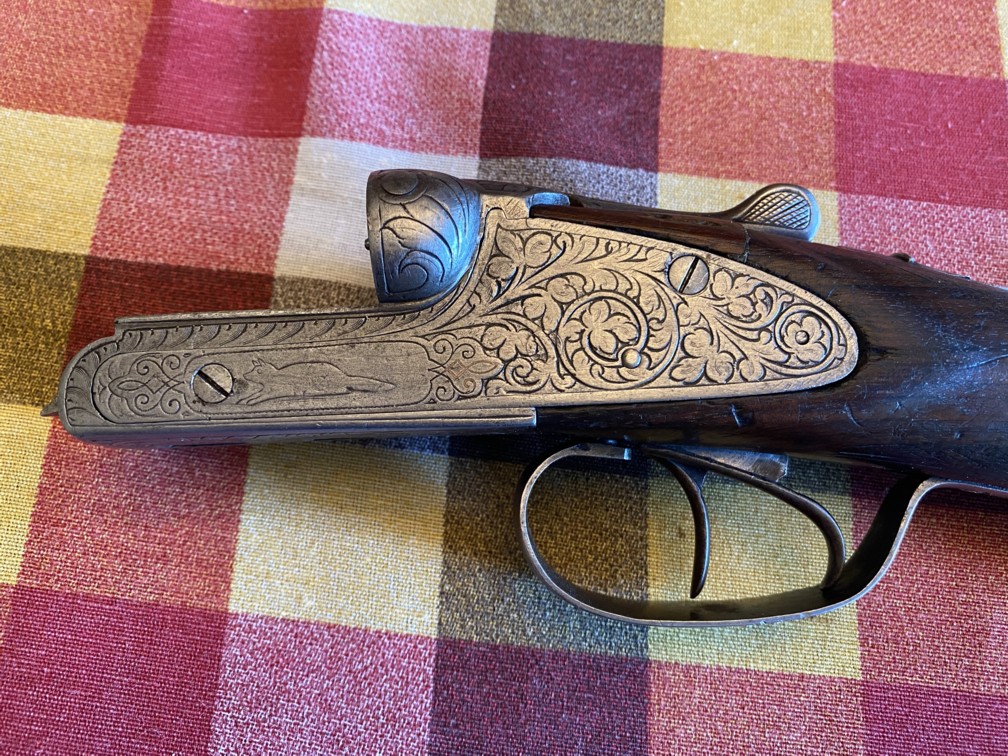
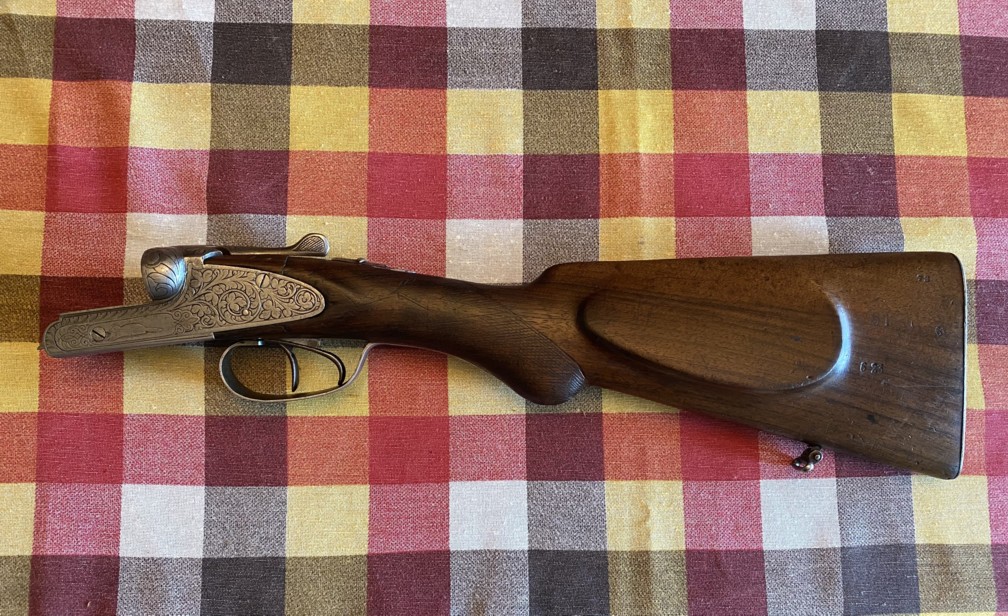
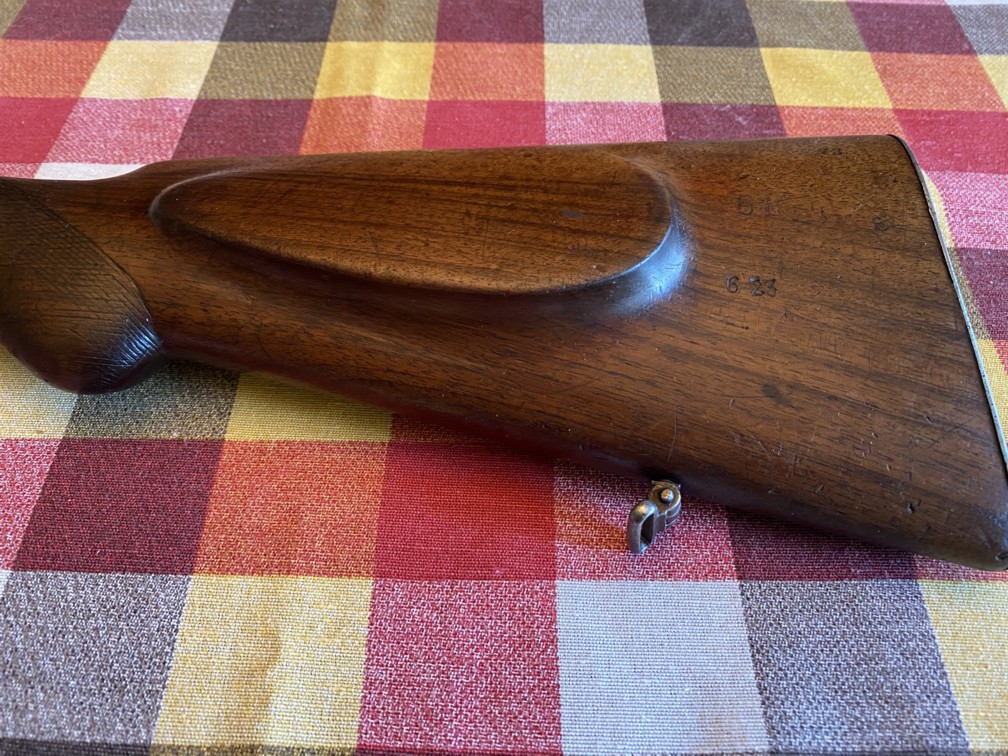
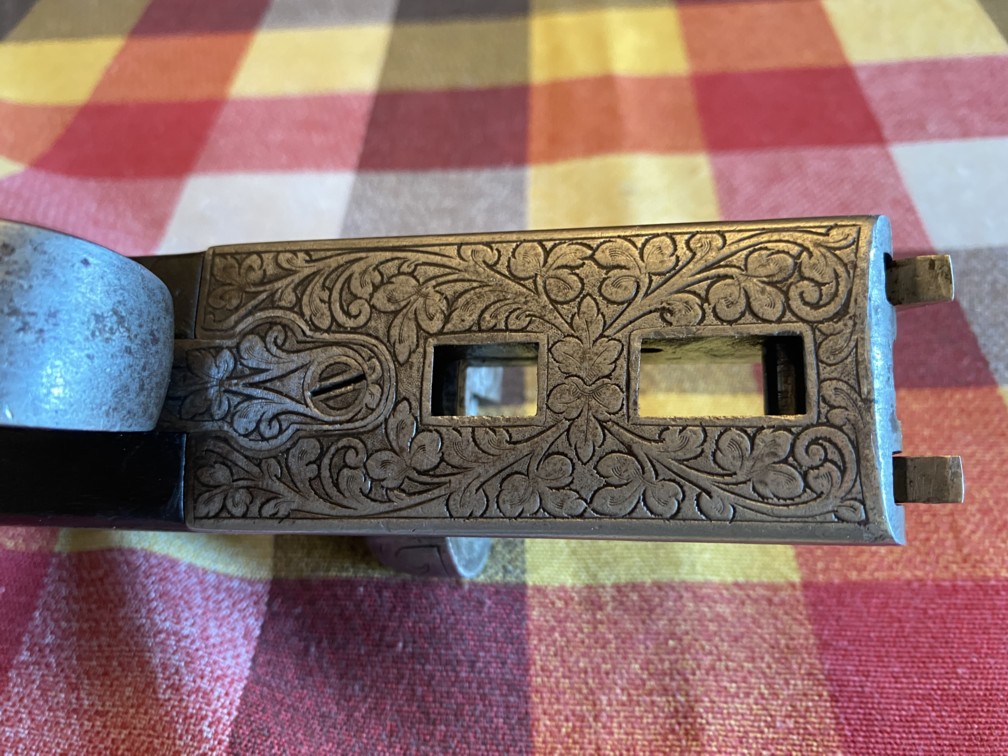
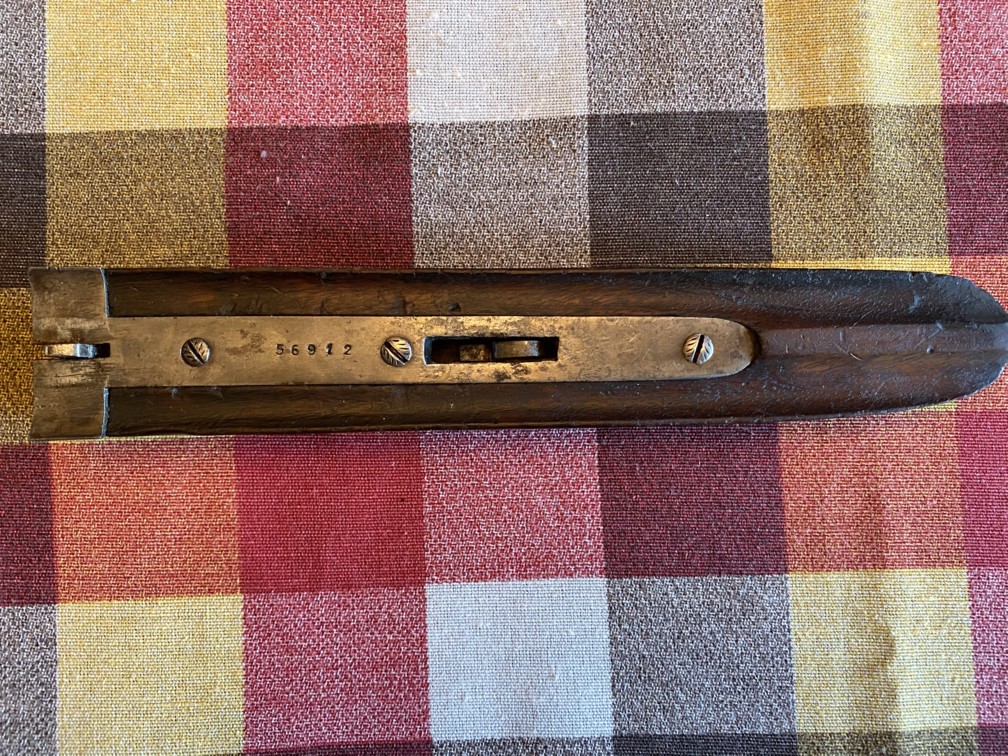

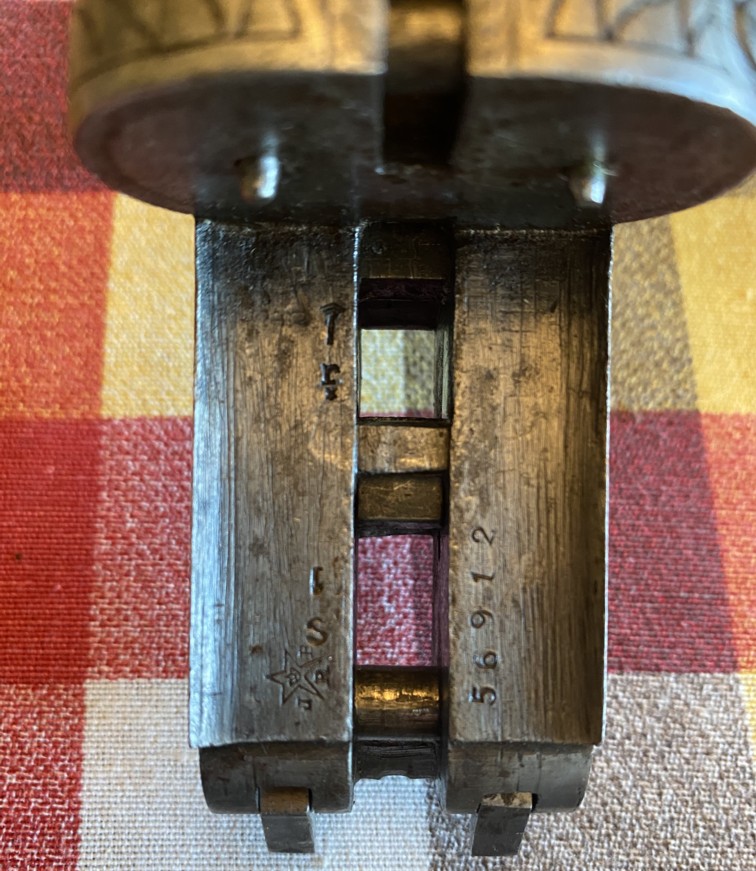
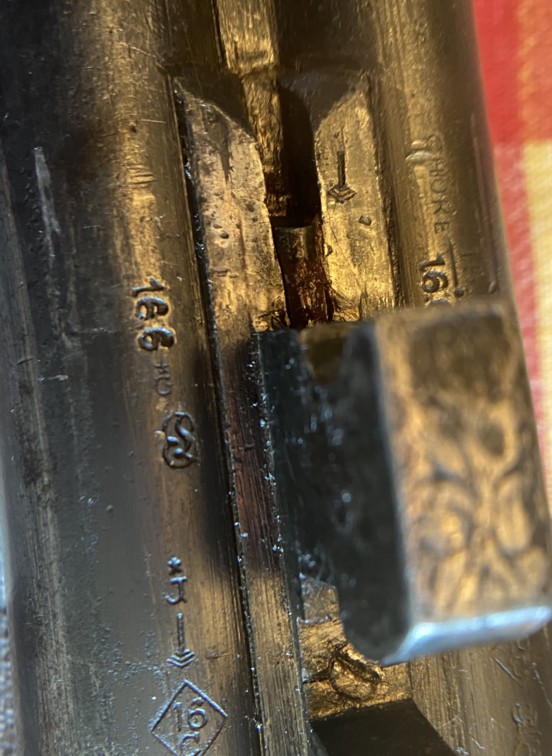
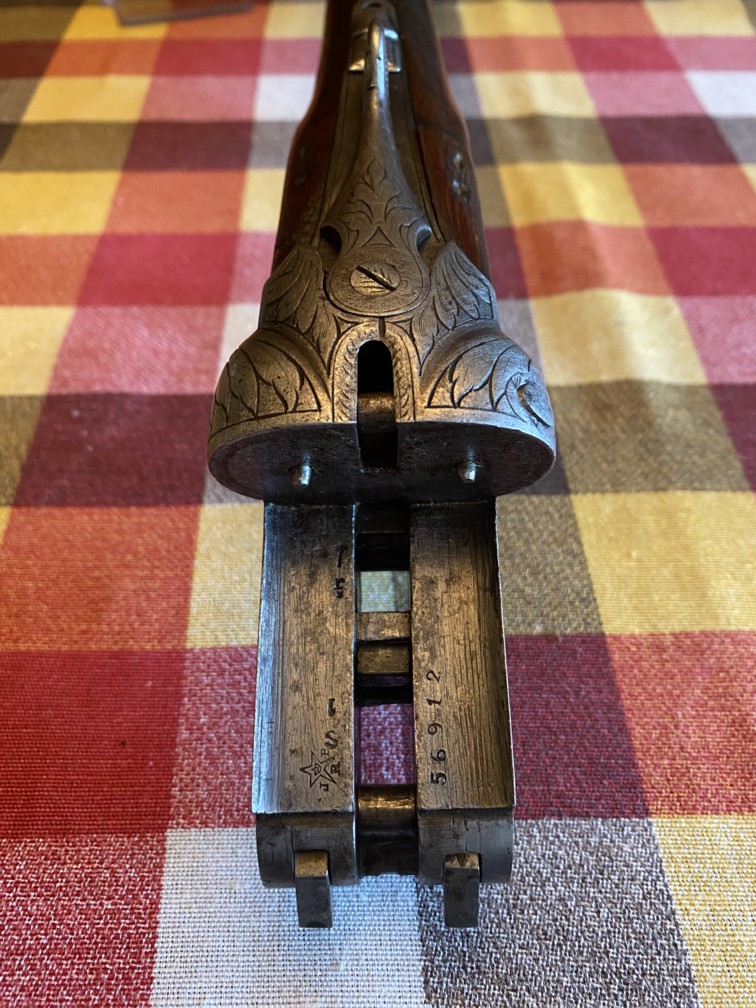

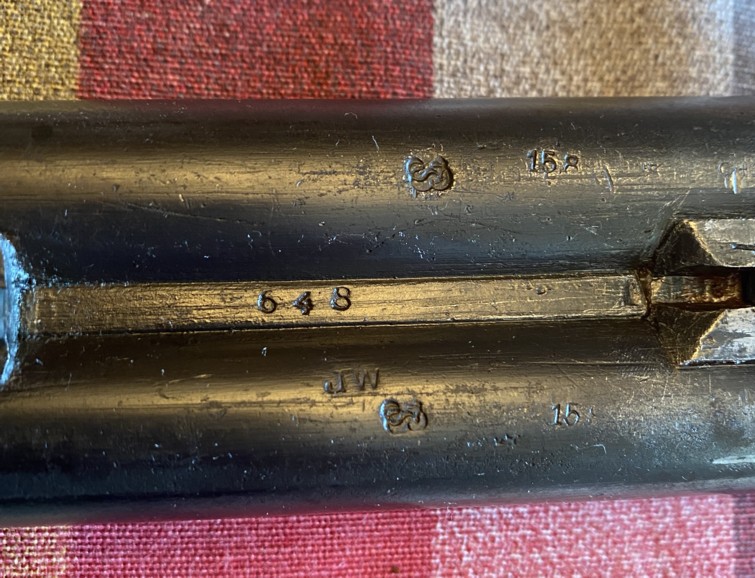
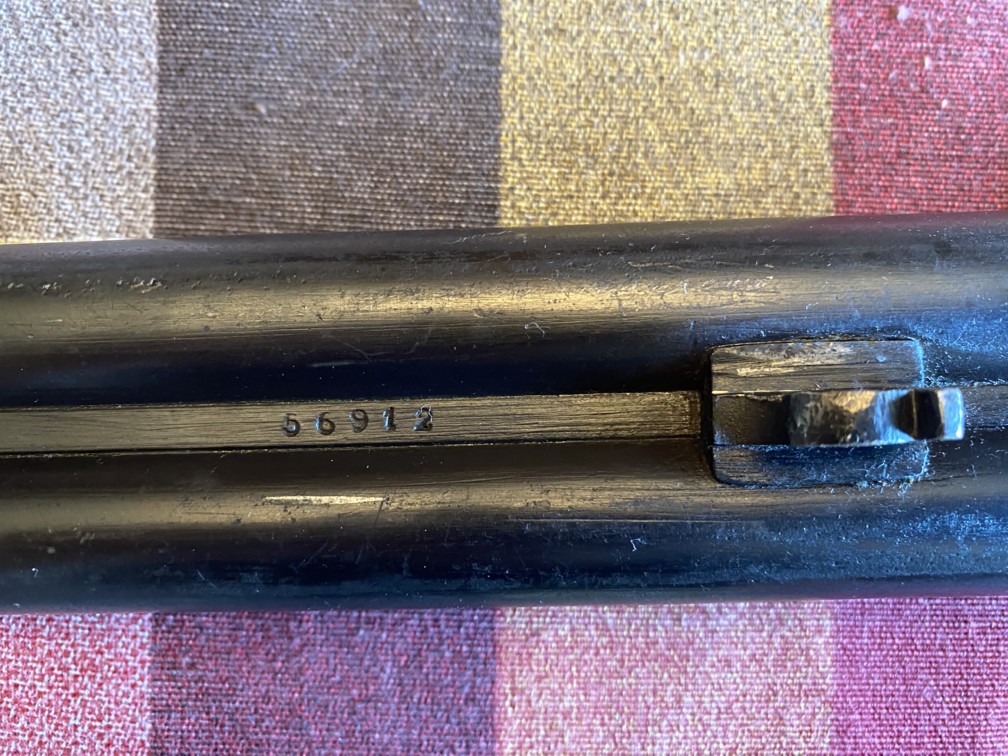
RONGE Jean-Baptiste
Here is an interesting juxtaposed hammerless rifle “Mephisto”, a pistol-grip and
cheekbutt that, after a lot of research, has been attributed, thanks to the
team, to
Jean-Baptiste RONGE
(initials JBR in six-pointed star under
crown), already mentioned on the website.
What’s more, the team also found the following very interesting link that evokes
another Mephisto rifle by
Jean-Baptiste RONGE
also bearing the “General Fire Armes Company” label:
https://www.shotgunworld.com/threads/shotgun-id-and-stamp-meaning.507056/
So far, at least, no other trace of this General Fire Arms Company has been
found in London.”
The guns were made by Fried. Krupp AG in Essen, Germany.
The punches
ELG on a star in a crowned oval: accepted by the proofhouse of Liège, in use
from 1893 to 1968;
Lion on PV: smoke-free powder proof, in use from 1898 to 1968;
J under star: countermark of a controller, in use since 1877;
Peron (little step) : inspection, in use since 1853;
EL: provisional proof, in use since 1852;
24 over C in vertical diamond: calibre, in use from 1898 to 1924;
P 1KG052.5: barrel weight, in use from 1892 to 30 June 1924.
This rifle therefore dates from the period between 1898 and 1922, when the
annals were introduced.
GP with the help of HPH and PHL.



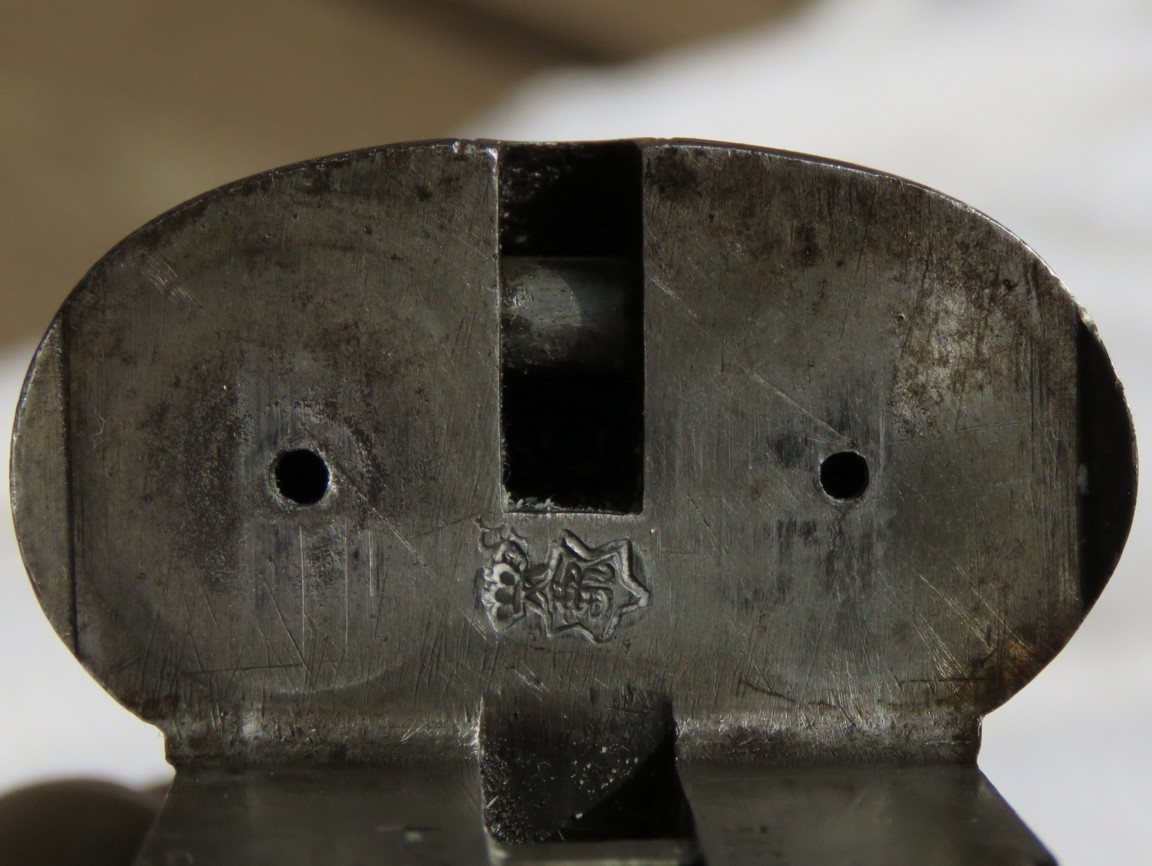
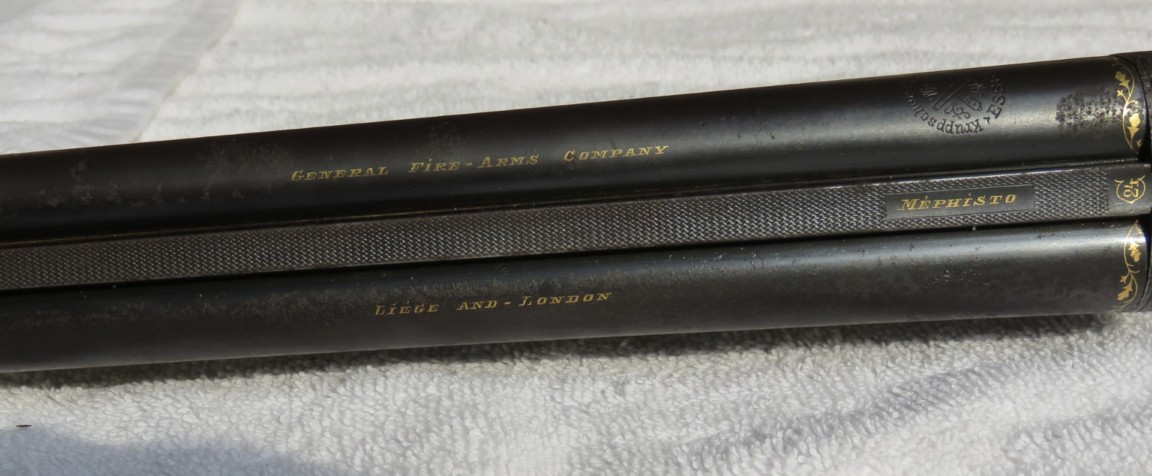
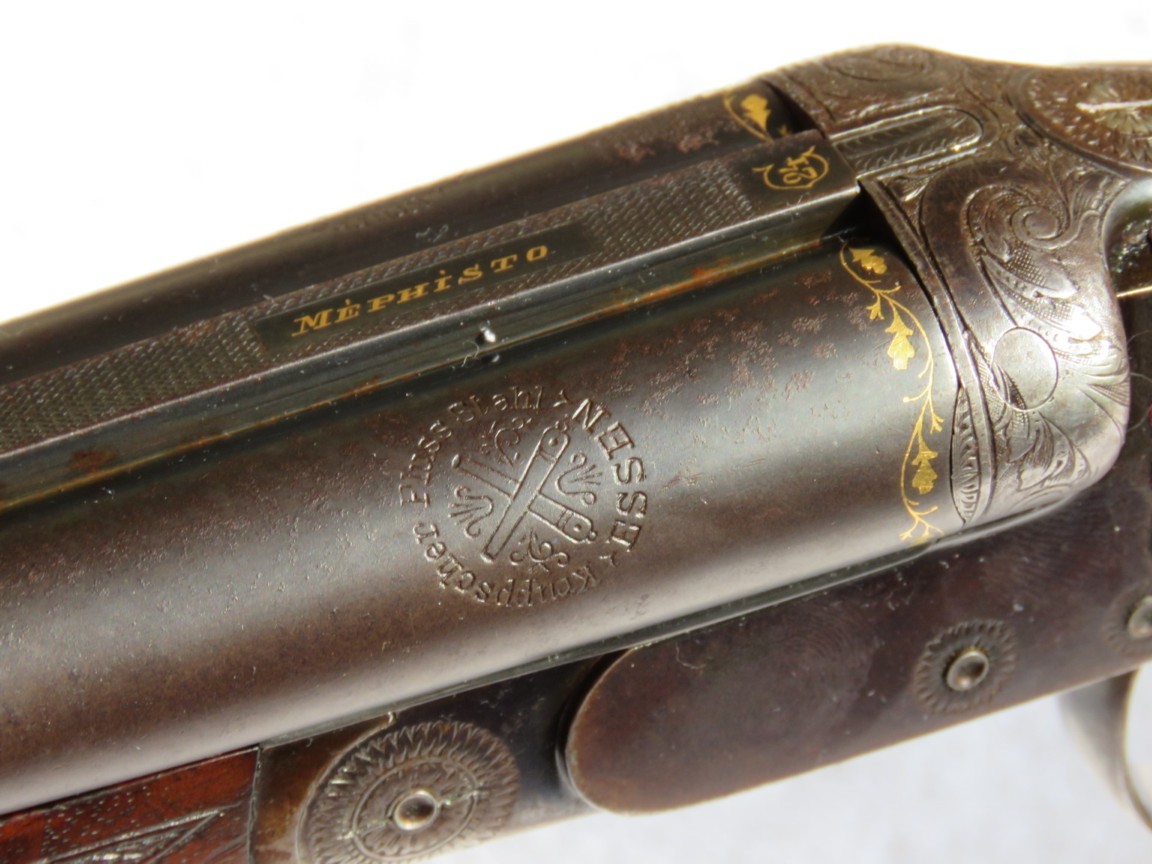
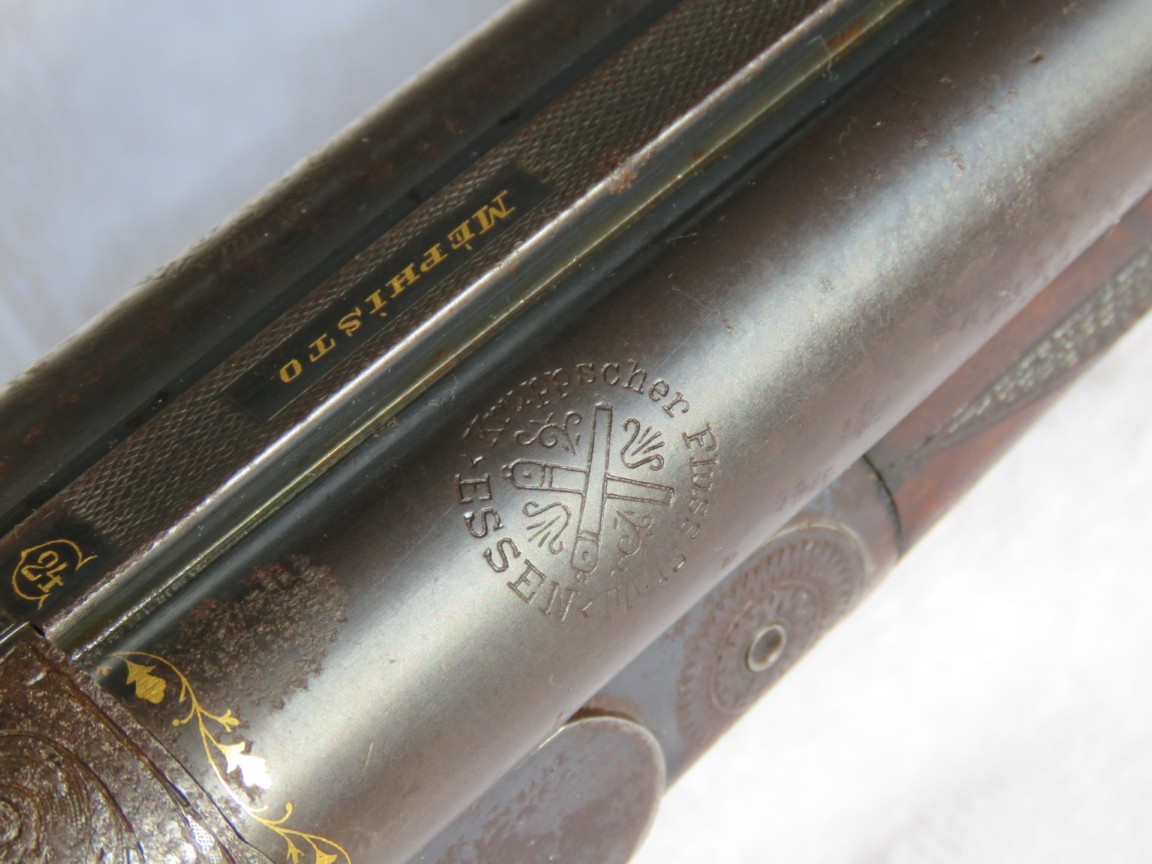
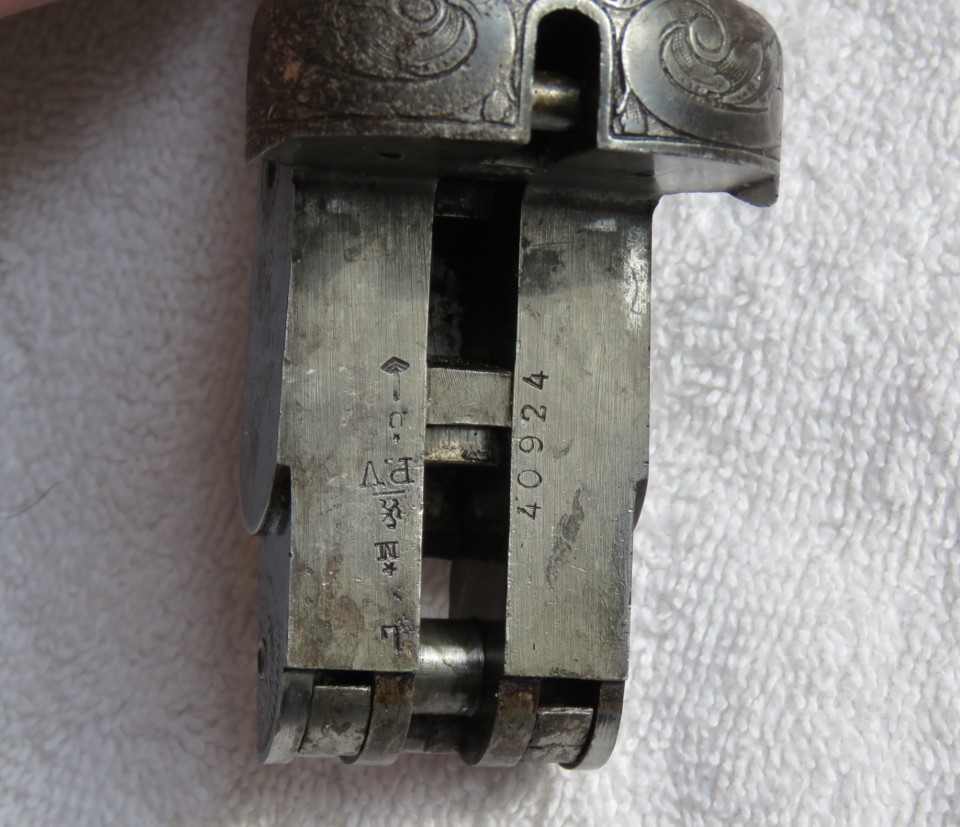
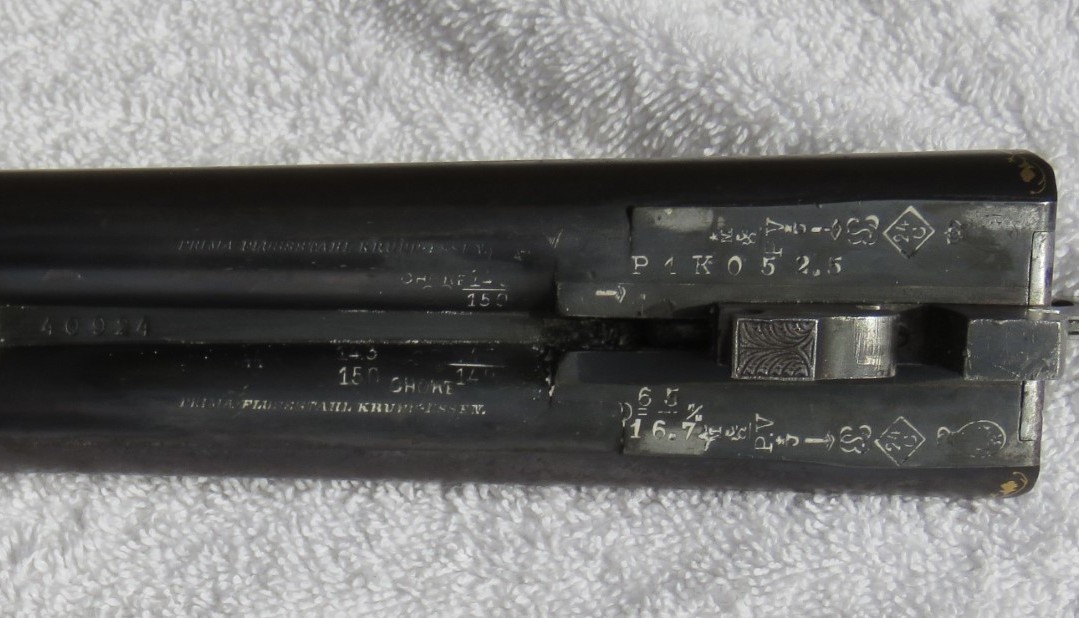
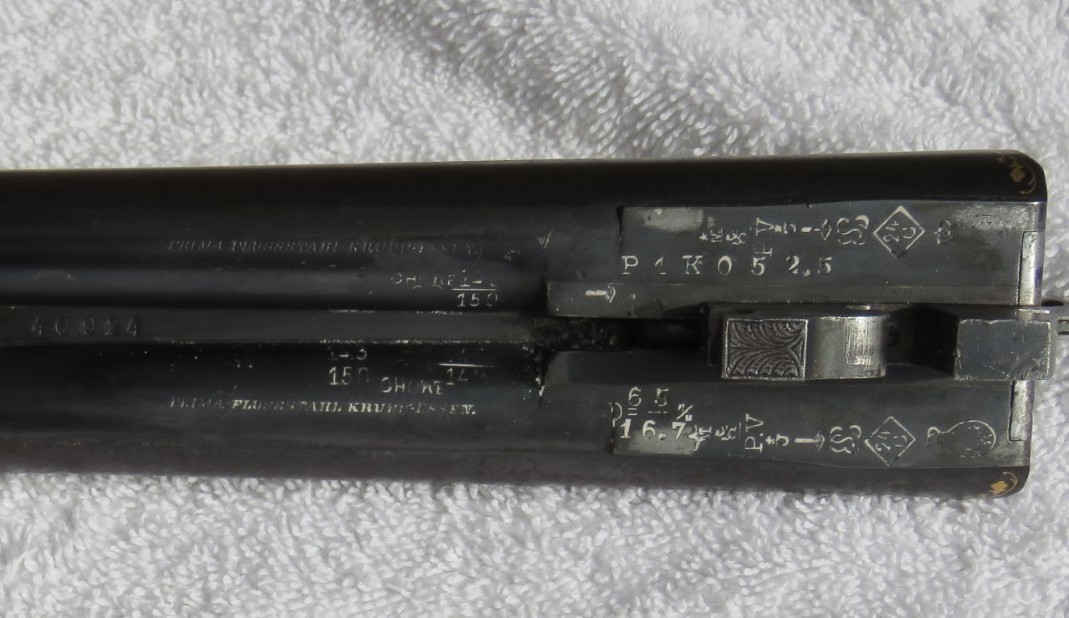
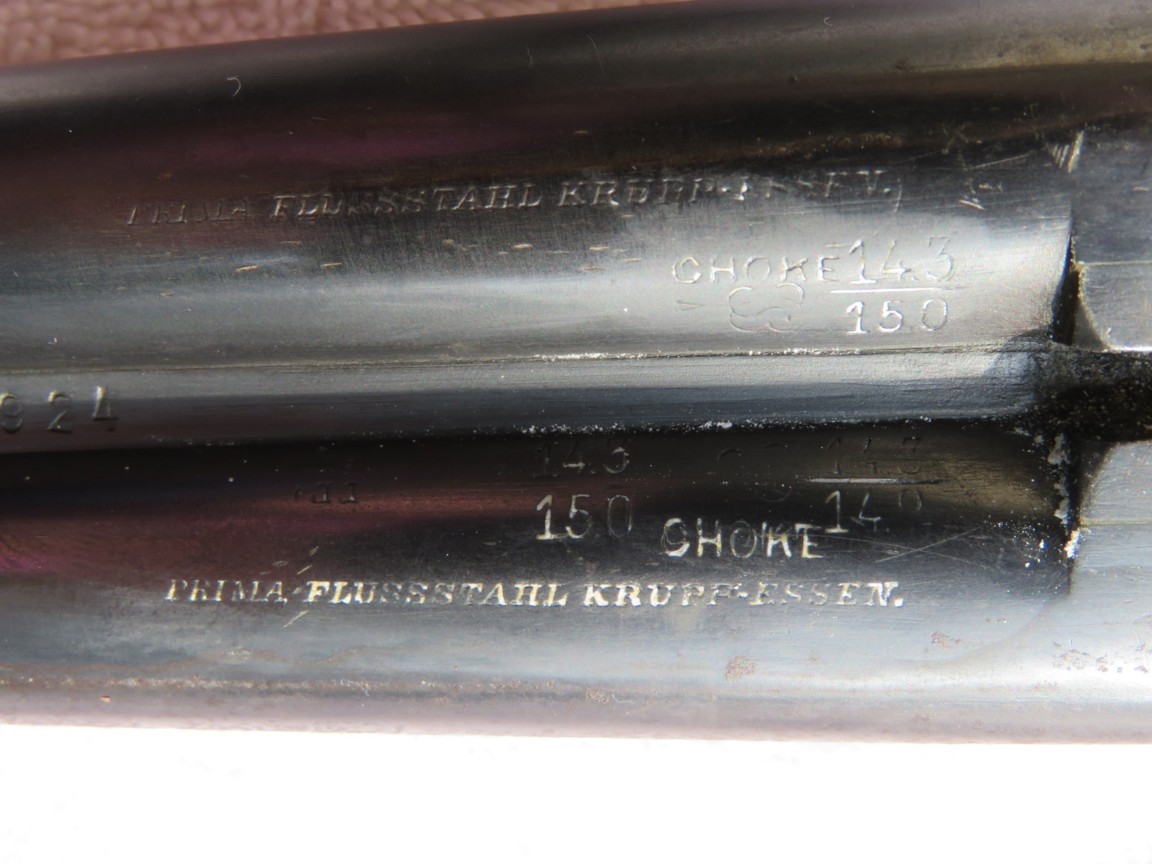
RONGE Jean-Baptiste
It is
about a shotgun to central percussion and top break. The lock is of type
“hammerless”. The barrels are juxtaposed, smooth and of gauge 12. The stick out
of wooden of walnut is of type “pistol”.
This weapon carries the lawful punches of the proofhouse of Liège, namely:
ELG* in a crowned oval: final acceptance post 1893.
Peron: inspection post 1853.
X* and V*: countermarks of the controllers post 1877.
PV surmounted of a stylized lion: test with the powder without smoke, of use D 1898 to 1968.
EL in English letters: provisional test, of use of 1852 to our days.
12 C in a rhombus: gauge, of use of 1898 to 1924.
P= 1K372.7: weight of the barrel which can draw from the powders without fume (weapons smooth), of use of 1892 to 1924.
65/20.6: length of the room in mm and diameter in mm after optional test with the powder without smoke. In use of 1892 to 1924.
17.4/18.4: chokes barrels, gauged in mm to 22 cm of the breech and the mouth. In use of 1910 to 1924.
The weapon also carries several marks, namely:
Special
Geweer Lauf Stahl Fried. Krupp AG Essen : this mark indicates that the barrels
were machined by Krupp with Essen (D).
JD Bte on the forearm: inventor not identified of the forearm.
JRB in a
crowned star:
mark of the manufacturer
Jean-baptiste Rongé
in Liège.
40964: serial number.
GG
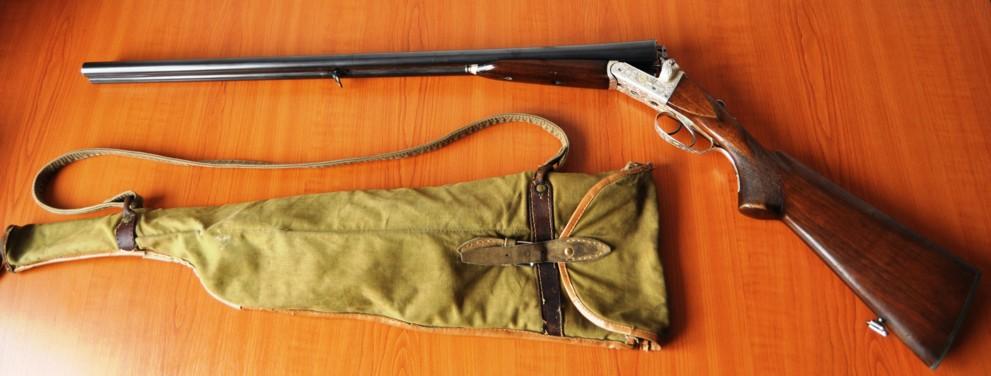

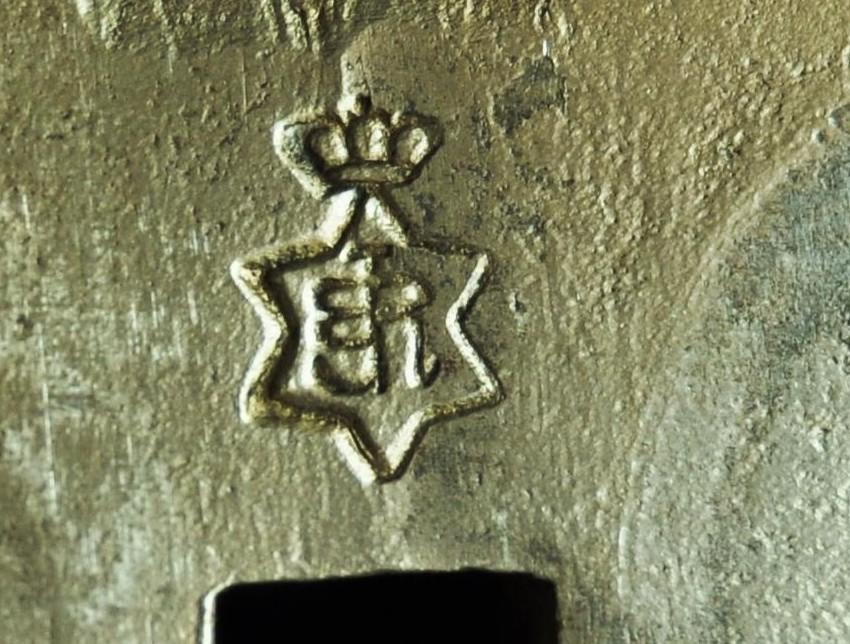
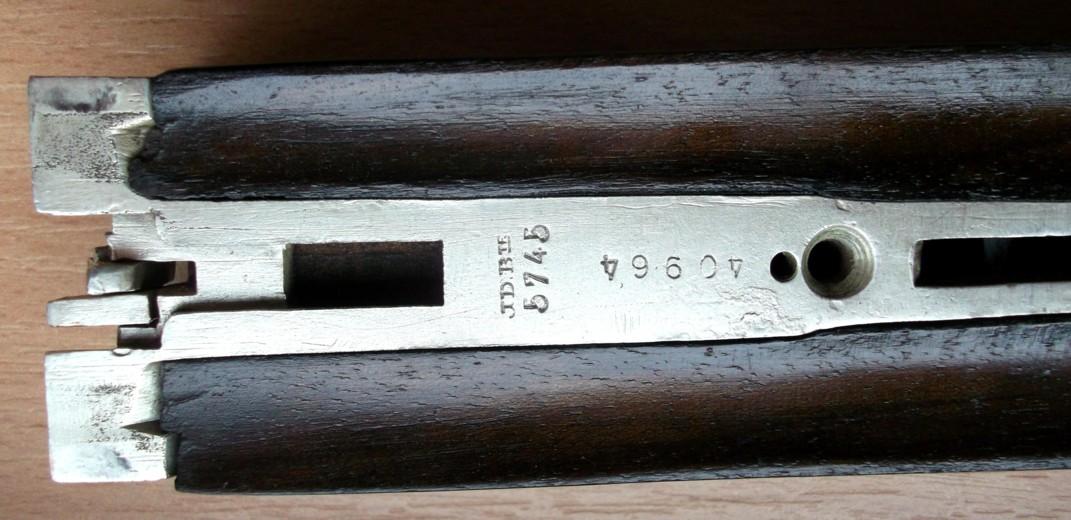
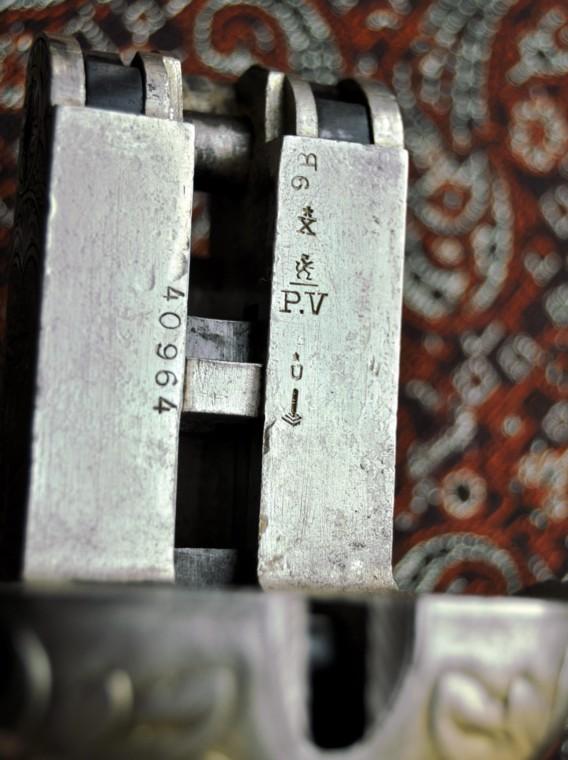
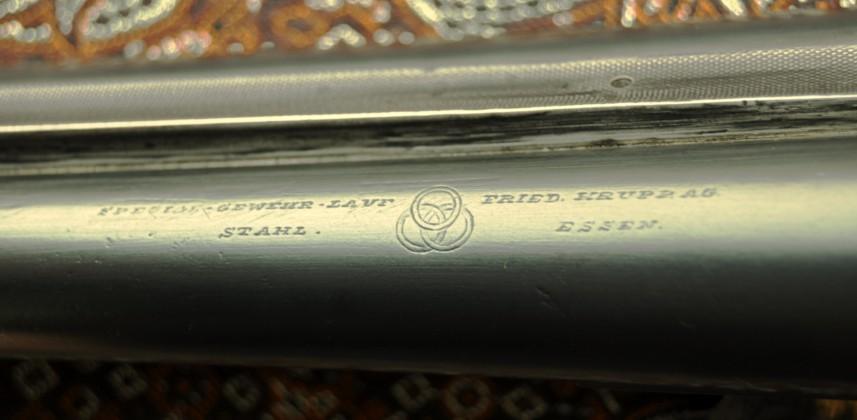
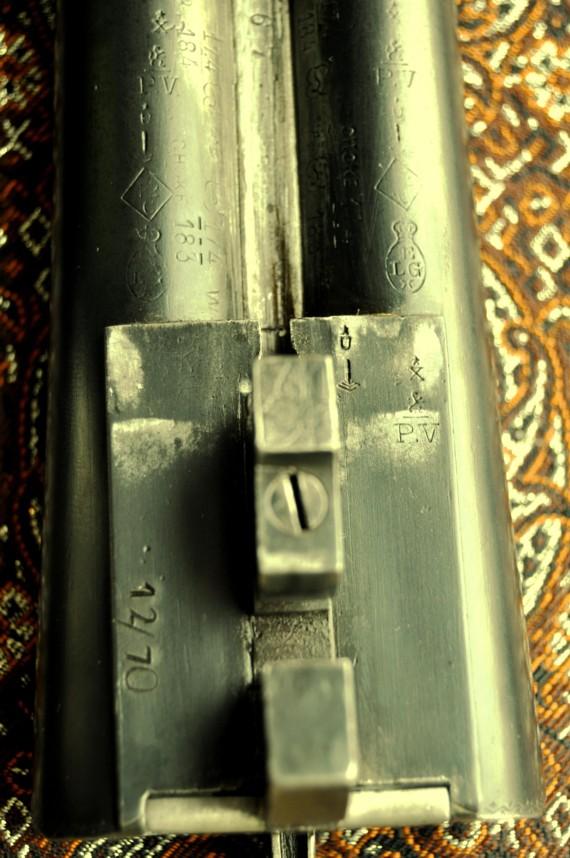

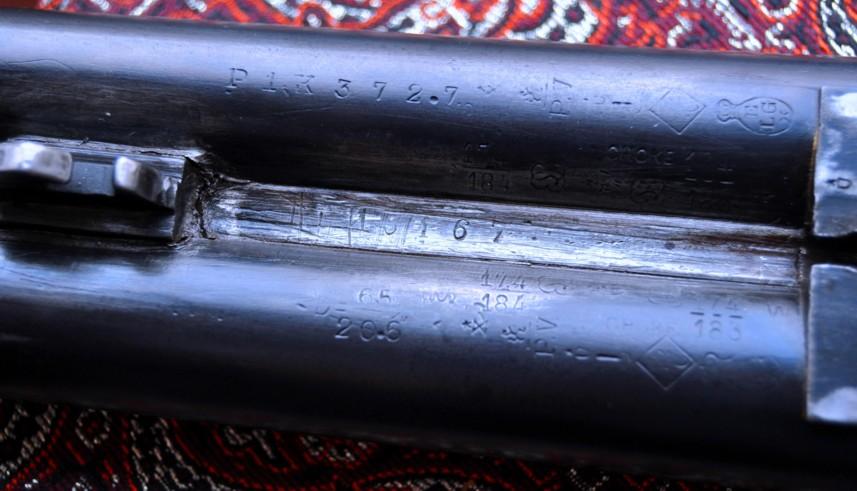
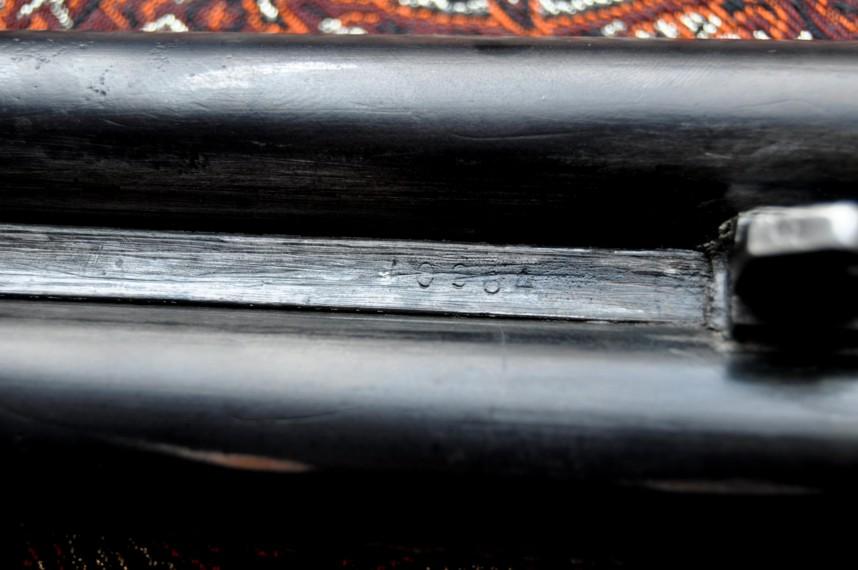
RONGE Jean-Baptiste
It is a
hammerless type shotgun. The two smooth-bore barrels are juxtaposed. A "top
lever" key is placed above the square plate. A Galand type safety is placed
right behind it.
The lock
is engraved in a hollow background of animal and plant motifs. The barrels at
the level of the lock carry a golden band representing a stem of foliage and
golden leaves.
The
walnut wood stock is "pistol" type.
The
weapon bears the regulatory hallmarks of the Liège proofhouse, namely:
ELG* in
a crowned oval: definitive acceptance post 1893.
G* and
T* : counter-markings of the post-1877 controllers.
Peron:
inspection, in use from 1853 to the present day.
EL in
English letters: provisional proof post 1852.
PV
surmounted by a stylized lion: smoke-free powder proof, in use from 1852 to the
present day.
12 C in
a diamond: calibre, in use from 1894 to 1968.
P1K519.4: Weight of the barrel capable of firing smokeless powder (smooth
weapons), in use from 1892 to 1924.
CHOKE
18.2 (the rest is not legible) Shocked barrels : calibrated in mm at 22cm from
the breech and at the mouth. Used from 1898 to 1910.
D= 65
m/m / 20. 6: Length of chamber in mm and diameter in mm after optional
smoke-free powder test. In use from 1892 to 1924.
The
weapon also bears the following markings:
J B R
crowned with a cross of Saint André
:
This is the trademark of the Liège armourer
Jean Baptiste
Rongé place St Jean, 4 from 1832 to 1929.
In 1929 it became the
ARMAF.
J.
Wallschlegel Neufchatel: fine gold mark on the band between the guns. This is
either the Swiss dealer or the first owner.
L.R.
on the barrels: probably the trademark of a subcontractor from Liège.
Essen
cross cannons
(the rest being illegible): this is most likely the manufacturer of the barrels,
but I could not completely decipher the wrong photo.
34825:
serial number of the weapon.
GG
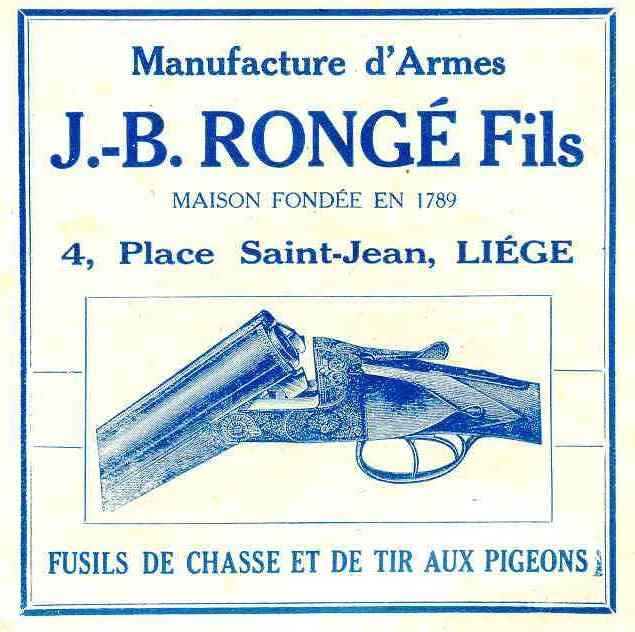

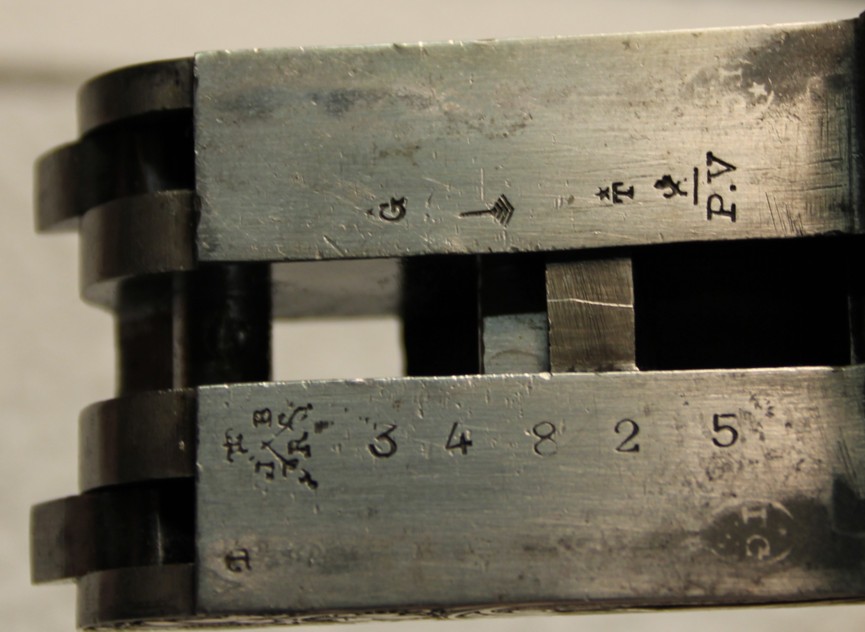


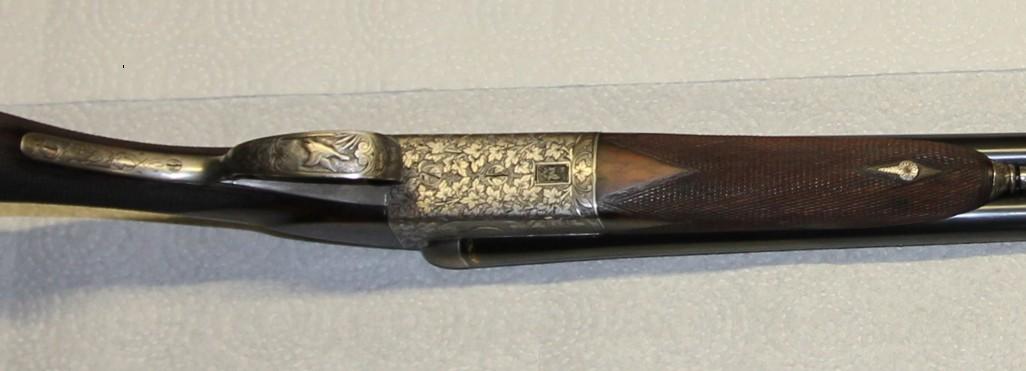

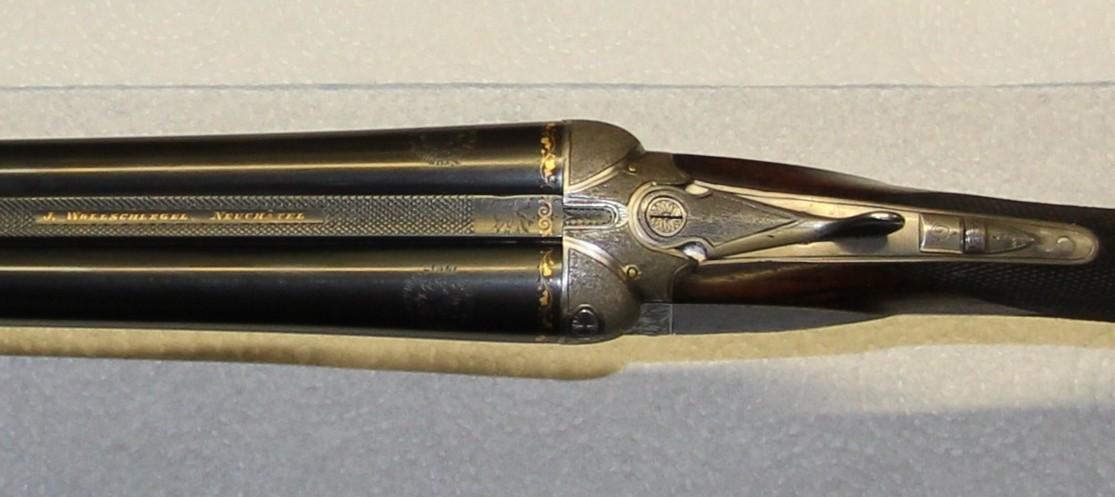
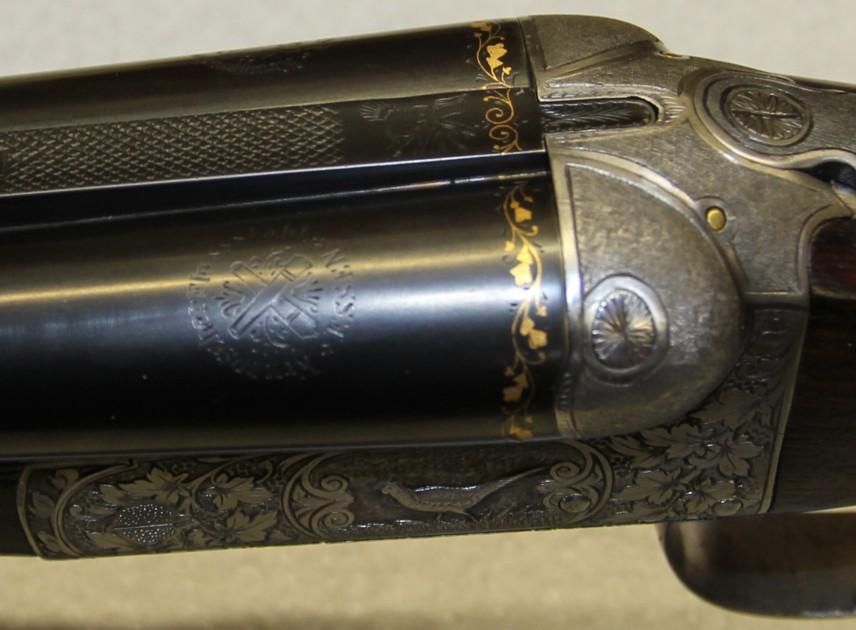
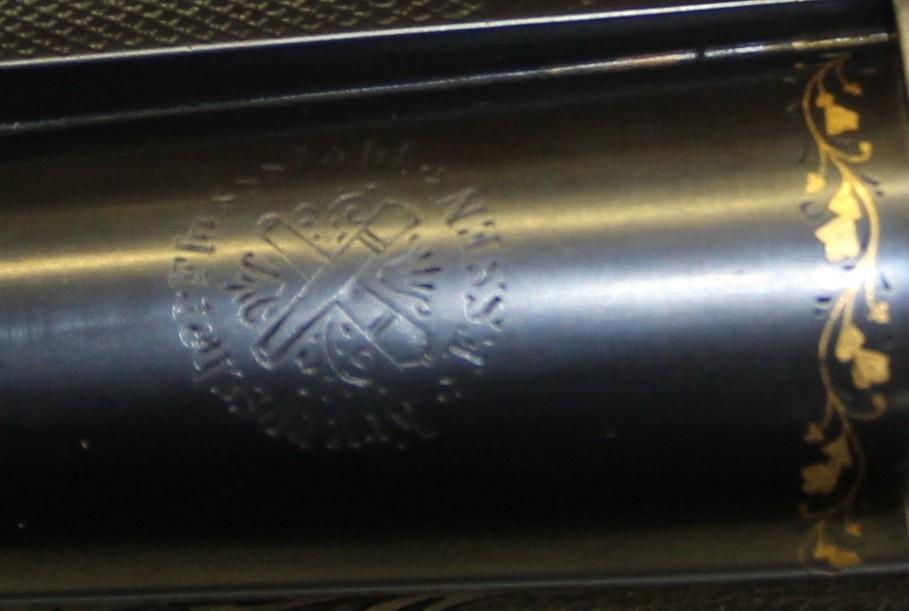
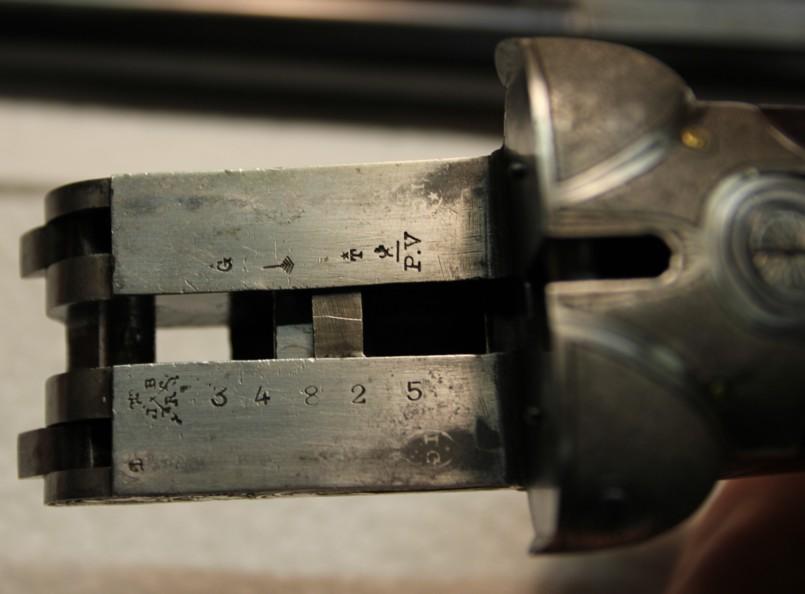
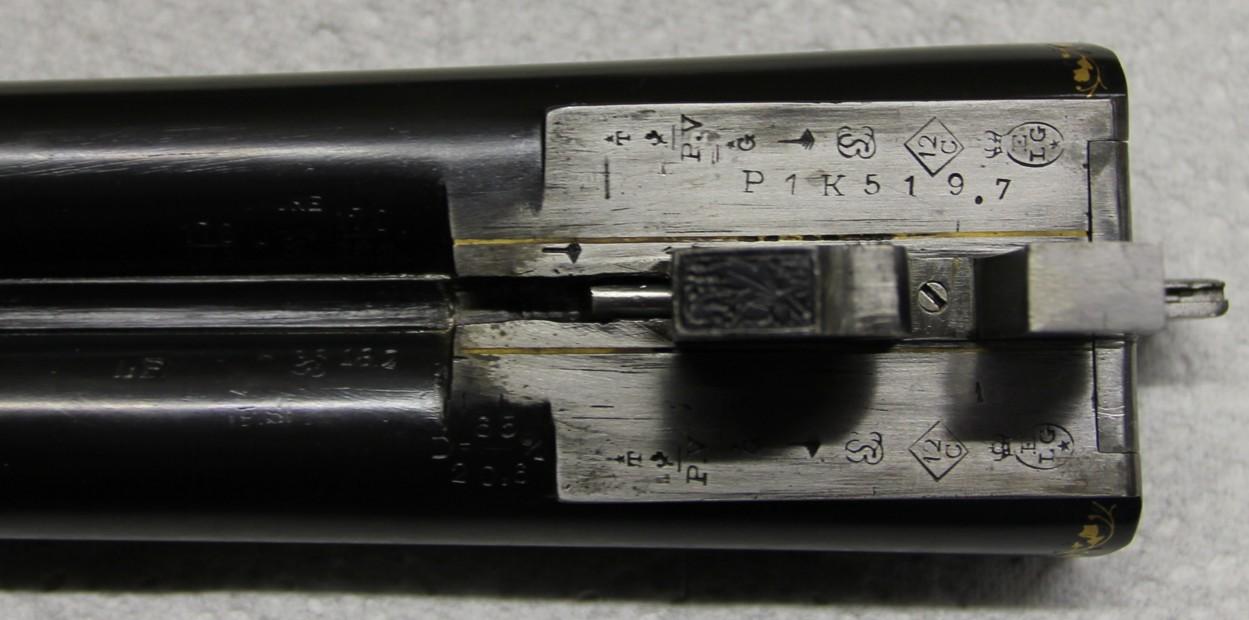


RONGE Jean-Baptiste
Here is
a juxtaposed shotgun of English manufacture.
The guns
come from the well-known manufacturer Andrew & C° Ltd Toledo Steel Works in
Sheffield.
See the
site below :
https://www.flickr.com/photos/shefflibraries/6867598556
It is
the same manufacturer who had supplied the barrels of the beautiful rifle of
Fernand Thonon already examined in the notice below :
It's a
12-gauge.
It was
punched at the London Proof House after 1904 (as a semi-smokeless) and before
1925.
In the
six-pointed star surmounted by a crown that can be seen on the weapon, one can
distinguish the initials JBR attributable to the belgian manufacturer
Jean-Baptiste Rongé.
Although
the initials here are in a star and not an oval, there's almost no doubt it's
Jean-Baptiste Rongé.
"Could
it be a part made in white by Rongé with a specific logo for export" one team
member rightly suggests.
GP with the help of PHL.
